
- WHO IS IT FOR?
- HOW IT WORKS

Discover Interact Engage
enhancing Collaborative relationships between the world of Education and Business.

Creatives For You - enhancing Collaborative relationships between the world of Education and Business.

- Who Are We?
- Creatives Vibe
- Creatives Connections
Bringing Communities Together
Who Is It for
Together We Co-Create a Better Future.
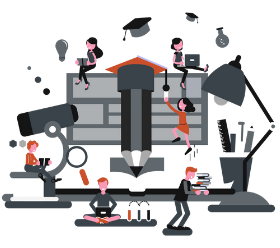
UNIVERSITIES
Enhance experiential learning.
Get your emerging talent out of their comfort zone whilst in your safe hands. Help them get connected.
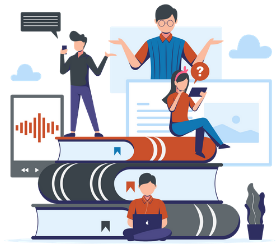
EMERGING TALENT
Connect, collaborate, create.
Discover the skills of those around you and collaborate across disciplines to shape your future.

Discover Emerging Talent
Shape the career journey of today's emerging talent to create the workforce of the future.
How it Works
- Emerging Talent
Create Your Profile
Interaction with staff has far reaching benefits for emerging talent – from creating environments they’re comfortable in to improving academic performance. Get to know your emerging talent and become more than just a friendly face.
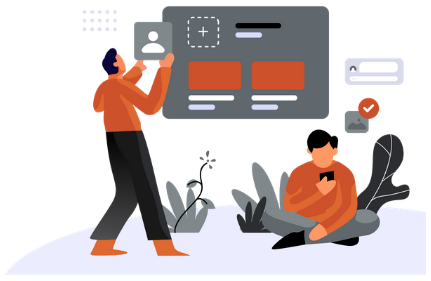
Connect & Discover
Connect with emerging talent and truly understand their strengths. Discover how they’re applying the skills you’ve taught them. From teaching staff to support staff, you all play key roles in shaping the academic lives of emerging talent. Get involved with their skills development and shape their work lives too.
Interact & Engage
Encourage emerging talent to engage like never before. Interact with employers and businesses to create live briefs for your classes. Build your emerging talents’ networks and teach skill transferability; add real world value to your courses.
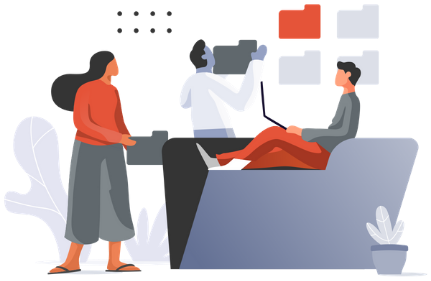
Your profile is your digital DNA and it’s as unique as you are! Show off your strengths and all the things that make you you.
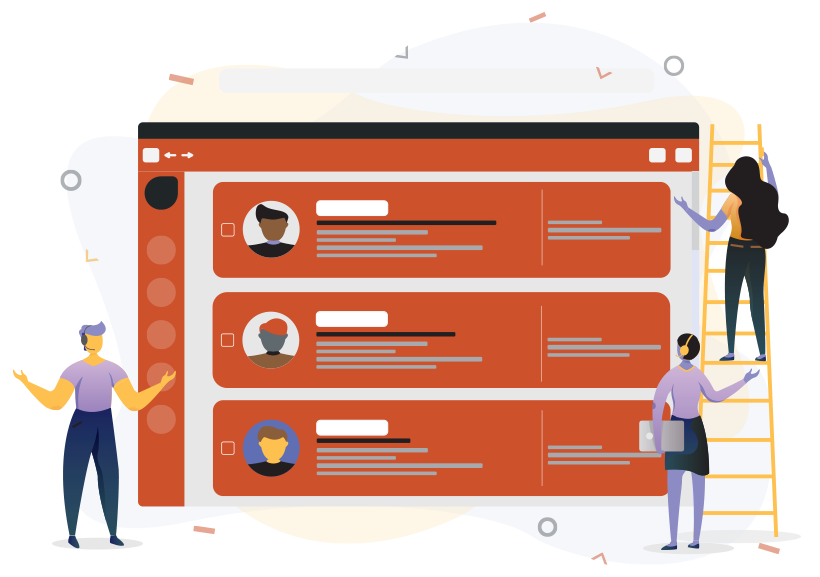
See the strengths of those around you – find out who has the skills to bring your project to life! Discover projects and jobs you’re the perfect fit for. Connect with other emerging talent beyond your course and campus; widen your network and help each other develop well rounded skillsets.
Interact with employers and access real world opportunities – show them what you’ve got to offer and see what they’re offering! Collaborate with peers to develop your skills and apply them in new ways. Shape your career with the contacts you make, the work you do, and the skills you gain

Let your profile do the talking. Share what you do and attract the emerging talent you’d love to work with. Get to know each other and build an open channel of communication from day one.
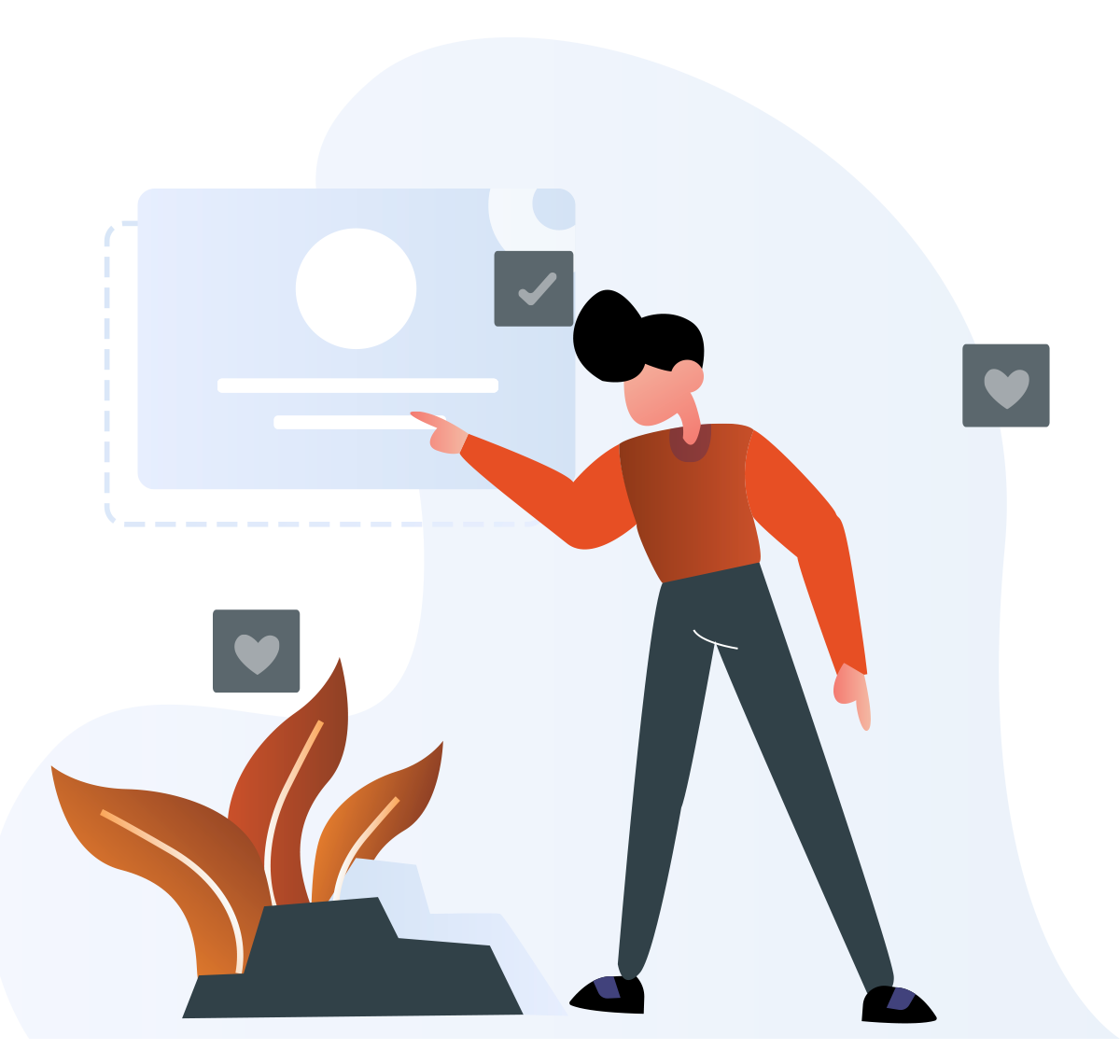
Contact emerging talent with skills matching your company’s needs and develop them into your dream candidates! Patch gaps in their skillsets through work experience and in-class live briefs. Discover opportunities to work with universities and advertise vacancies to their networks.
We all know there’s no substitute for experience. Your influence can take emerging talent from potential to professional and shape the trajectory of their careers.
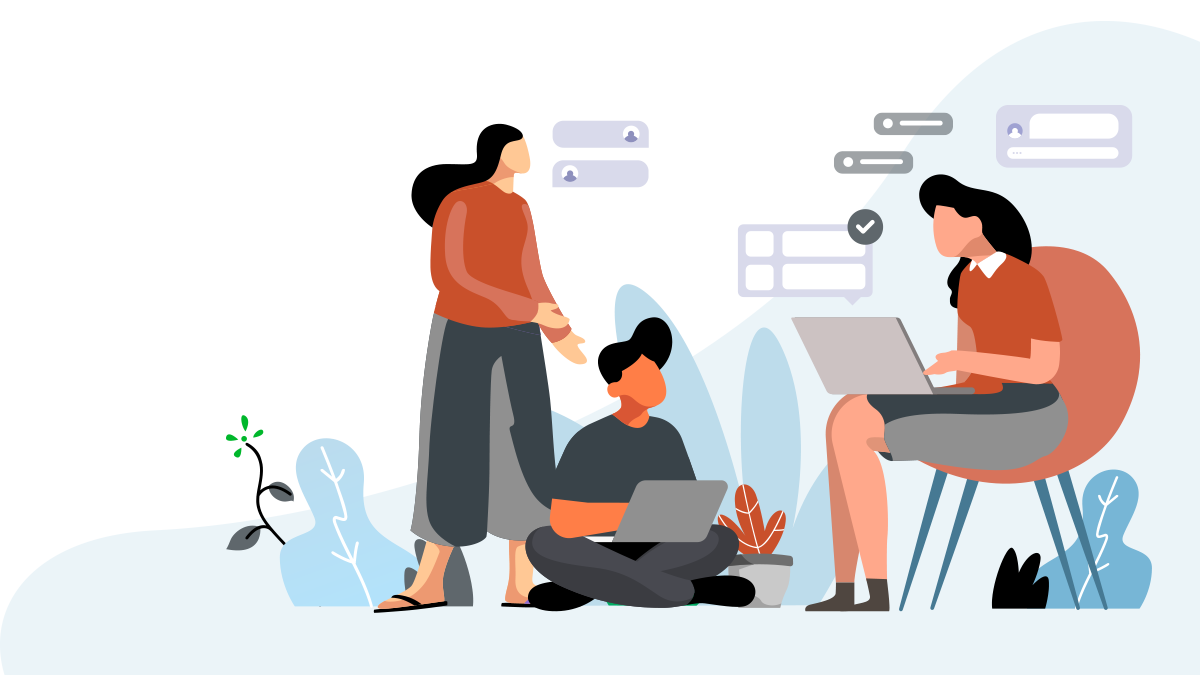
Our Support Network
Our constant source of growth, guidance and inspiration
on our Creatives’ journey.

Join us on our Creatives Journey and receive personalised updates .
- emerging talent
Greater Good Science Center • Magazine • In Action • In Education
Ten Habits of Highly Creative People
What exactly is creativity? So many of us assume that creativity is something we had as a child but we lost, or something allocated to rarified individuals that we can only admire from afar.
But science has shown that, in many ways, we are all wired to create. The key is recognizing that creativity is multifaceted—on the level of the brain, personality, and the creative process—and can be displayed in many different ways, from the deeply personal experience of uncovering a new idea or experience to expressing ourselves through words, photos, fashion, and other everyday creations, to the work of renowned artists that transcends the ages.
Neuroscientists who study creativity have found that creativity does not involve a single brain region or even a single side of the brain, as the “right brain” myth of creativity suggests; instead, it draws on the whole brain. This complex process consists of many interacting cognitive systems (both conscious and unconscious) and emotions, with different brain regions recruited to handle each task and to work together as a team to get the job done.

The discovery of the “default network” of the brain—the part of the brain at work when we are not purposefully engaged in other tasks—is one of the most important recent discoveries in neuroscience. The default network enables us to construct personal meaning from our experiences, imagine other perspectives and scenarios, comprehend stories, and reflect on mental and emotional states—both our own and those of others. It should come as no surprise then that the activity of this network—as we like to call it, the “imagination network”—also informs our most creative ideas.
The “executive attention” network of the brain is also crucial to creativity, however. Executive control processes support creative thinking by helping us deliberately plan future actions, remember to use various creative tactics, keep track of which strategies we’ve already tried, and reject the most obvious ideas. They also help us focus our imagination, blocking out external distractions and allowing us to tune into our inner experiences.
When we generate new ideas, these networks—along with the salience network, which is responsible for motivation—engage in a complex dance. Researchers have observed this cognitive tango in action through the brain scans of people engaged in their personal creative processes. Initially, their brain states resemble a state of flow or complete absorption in the task. The imagination and salience networks are highly active, while the more focused executive domain is relatively quiet. However, as creative people further hone and refine their work, the executive attention network becomes increasingly more active.
Creative people are particularly good at exercising flexibility in activating and deactivating these brain networks that in most people tend to be at odds with each other. In doing so, they’re able to juggle seemingly contradictory modes of thought—cognitive and emotional, deliberate and spontaneous. Even on a neurological level, creativity is messy.
So, what can we do to augment this cognitive flexibility? In our book, Wired to Create , we explore how to develop creativity as a habit, a way of life, and a style of engaging with the world. We present many paradoxes—mindfulness and mind wandering, openness and sensitivity, solitude and collaboration, play and seriousness, and intuition and reason—that contribute to the creative process. We encourage people to embrace their paradoxes and complexities and open up to a deeper level of self-understanding and self-expression. It is precisely this ability to hold the self in all of its dimensional beauty that is the very core of creative achievement and creative fulfillment.
Here are the some of the habits of mind we recommend to foster more creativity in your life.
1. Imaginative play
Observing children in imaginative play reveals a wellspring of natural-born creativity. When engaged in pretend play, children take on multiple perspectives and playfully manipulate emotions and ideas.
As adults, cultivating a childlike sense of play can revolutionize the way we work.
Research shows that hybrid forms of work and play may actually provide the most optimal context for learning and creativity, for both children and adults, and that play and intrinsic joy are intimately connected, creating a synergy that naturally leads to greater inspiration, effort, and creative growth.
Passion often stems from an experience or a relationship that moved us somehow and can lead to inspiration. It is often the emotional fuel that starts one down a creative path, but it’s only a start. People who fulfill their creative dreams over the long haul balance the excitement about the future with realistic strategies for getting closer to their goals; inspiration with hard work; and dreaming with doing.
When someone advises you to “Follow your passion,” use caution: aside from being one of the most common clichés out there, it’s not very helpful advice. You must look for passion that is in harmony with your authentic self and is compatible with your other activities. Passion to prove yourself to others will probably not result in creativity, as it relies on your avoiding challenges that would otherwise lead to growth. So, while you should be open to what inspires you, don’t follow passion blindly. Make sure it truly resonates with you and your skills.
3. Daydreaming
Creative people know, despite what their parents and teachers might have told them, that daydreaming is anything but a waste of time. A review of the latest science of daydreaming has shown that mind wandering offers very personal rewards, including creative incubation, self-awareness, future planning, reflection on the meaning of one’s experiences, and even compassion.
Idle though it may seem, the act of mind wandering is often anything but mindless; it can lead to improvements in creative thinking. So, the next time you’re working hard on a creative project or work assignment that requires intense focus and creative chops, try taking a five-minute daydreaming break every hour. Try engaging in a simple activity that will allow your mind to wander, like walking, doodling, or cleaning, and see how it affects your ideas and thinking.
4. Solitude
The metaphorical “room of one’s own” is a basic need for many creative people. Now, science has reinforced what the work habits of countless artists have demonstrated: Time for solitary reflection truly feeds the creative mind.
Neuroscientists have discovered that solitary, inwardly focused reflection employs a different brain network than outwardly focused attention. When our mental focus is directed towards the outside world, the executive attention network is activated, while the imagination network is typically suppressed. This is why our best ideas don’t tend to arise when our attention is fully engaged on the outside world.
It’s important to make time for solitude, to give yourself space to reflect, make new connections, and find meaning. Unfortunately, solitude is widely undervalued in society, leading many people to shy away from alone time. We tend to view time spent alone as time wasted or as an indication of an antisocial or melancholy personality. But the ability to enjoy and make productive use of our own company can trigger creativity by helping us tap into our thoughts and our own inner worlds. So, don’t avoid it…embrace it!
5. Intuition
Intuition arises from unconscious, or spontaneous, information-processing systems, and it plays an important role in how we think, reason, create, and behave socially. Over the past thirty years, cognitive scientists have made huge strides in demystifying the power of the unconscious mind, leading to the recognition of a dual-process theory of human cognition—or the “fast and slow brain” theory. Intuition is part of the fast brain system.
The fast brain is structurally more sophisticated than the slow brain. It helps us assimilate new information into our existing knowledge structures, and aids us in complex pattern recognition and in making unconventional connections that lead to more original ideas and solutions. The fast brain plays the largest role when generating creative ideas, while the more deliberate slow brain play a larger role when exploring those ideas and playing around with them, to determine their uses and applications. Both the fast brain and slow brain have a role to play.
6. Openness to experience
Openness to experience—the drive for cognitive exploration of one’s inner and outer worlds—is the single strongest and most consistent personality trait that predicts creative achievement. Openness can be intellectual, characterized by a searching for truth and the drive to engage with ideas; aesthetic, characterized by the drive to explore fantasy and art and experience emotional absorption in beauty; or affective, characterized by exploring the depths of human emotion.
Research has found that the desire to learn and discover seems to have significantly more bearing on the quality of creative work than intellect alone. So, if you want to boost your creativity, try out a new creative outlet or a totally different medium of expression, or take a new route home from work, or seek out a new group of people with different interests or values that you might learn from. Openness to new experiences can help increase your integrative complexity—the capacity to recognize new patterns and find links among seemingly unrelated pieces of information.
7. Mindfulness
While the capacity to observe the present moment without distraction or judgment is a vital skill for anyone who seeks joy and fulfillment in life, it’s particularly important for creative thinkers.
A large body of research has associated mindfulness —both as a practice and as a personality trait—with many cognitive and psychological benefits like improved task concentration and sustained attention, empathy and compassion, introspection, self-regulation, enhanced memory and improved learning, and positive affect and emotional wellbeing. Many of these are central to creativity.
However, for optimum cognitive flexibility and creativity, it’s best to achieve a balance of mindfulness and mind wandering. Some forms of mindfulness may actually work against creativity—specifically, those that encourage one to let go of thinking rather than accepting thoughts in a more open manner. Interestingly, open-monitoring meditation, which emphasizes tuning into one’s subjective experience, has been found to increase both the activation and the functional connectivity of the imagination network. So, try practicing an open-monitoring or nondirective form of meditation, and allow for constructive mind-wandering while also boosting attention.
8. Sensitivity
If we think of creativity as “connecting the dots” in some way, then sensitive people—those who have a heightened sensitivity to their surroundings and also an intensified experience of sensory input, like for sound, lighting, and scent—experience a world in which there are both more dots and more opportunities for connection.
Sensitivity can be both a blessing and a curse—leading to a greater intensity of experience as well as emotional overwhelm. Journalist Andrea Bartz wrote in Psychology Today that “those who learn to dial down the relentless swooping and cresting of emotion that is the almost invariable accompaniment to extreme sensitivity are able to transform raw perception into keen perceptiveness.”
So, rather than trying to harden yourself, you may want to harness your sensitivity into artistic expression.
9. Turning adversity to advantage
Experiences of loss, struggle, suffering, and defeat can be powerful catalysts for personal growth, creativity, and deep transformation. It is often through suffering that we learn compassion, from loss that we learn understanding, and from overcoming struggles that we come to discover our own strength and beauty.
Adverse events can force us to reexamine our beliefs and life projects, and therein lie their power and creative potential. After the experience of adversity, the mind is actively dismantling old belief systems that no longer hold up and creating new structures of meaning and identity. To make meaning of difficult experiences, try expressive writing , which research has found can lessen symptoms of post-traumatic stress and depression, while improving some cognitive functions, like working memory.
Interestingly, research has also found that extreme positive events—in particular, those that evoke feelings of awe, wonder, inspiration, and connection to something greater than the self—can also encourage creativity. Positive emotions build a person’s psychological resources, broadening attention, inspiring new thoughts and behaviors, and stimulating creative thinking. So, if you’re looking for a creative boost, treat all of life’s meaningful moments—the good and the bad—as potential sources of inspiration and motivation.
10. Thinking differently
Creative people are united by their unwillingness to abide by conventional ways of thinking and doing things. In choosing to do things differently, they accept the possibility of uncertainty and failure—but it is precisely this risk that opens up the possibility of true innovation.
The secret to creative greatness appears to be doing things differently even when that means failing. Especially during idea-generation phases, trial-and-error is essential for innovation. Dean Keith Simonton, who studies creativity, found that the quality of creative ideas is a positive function of quantity: The more ideas creators generate, the greater chances they will produce an eventual masterpiece. Doing things differently means you will probably do things badly or wrong; so expect that and don’t let caution get in the way of creativity.
Will following all of these routes to creativity mean you will become a creative genius? Not necessarily. But, when the artist is alive in any person, whatever his kind of work may be, he becomes an inventive, searching, daring, self-expressive creature. If we learn to embrace our own messy, creative selves, we give others permission to do the same. We help create a world that is more welcoming of the creative spirit, and we make it possible to find a greater connection with others and with ourselves in the process.
About the Authors
Scott barry kaufman.
Scott Barry Kaufman, Ph.D., is scientific director of The Imagination Institute in the Positive Psychology Center at the University of Pennsylvania. He conducts research on the measurement and development of imagination, creativity, and play, and teaches the popular undergraduate course Introduction to Positive Psychology. Kaufman is author of Ungifted: Intelligence Redefined and co-author of the book Wired to Create: Unraveling the Mysteries of the Creative Mind (with Carolyn Gregoire).Follow on Twitter @sbkaufman .
Carolyn Gregoire
You may also enjoy.
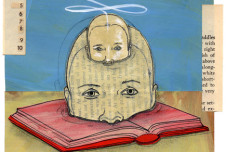
A Feeling for Fiction

Can We Play?
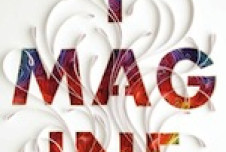
Five Tips for Reaching Your Creative Potential
7 ways to foster creativity.
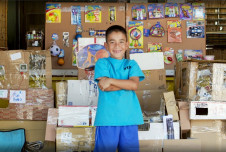
Lessons in Creativity from Caine’s Arcade

Nine Steps to Achieving Flow in Your Work
Fostering Creativity: 12 Strategies to Boost Creative Skills

It has also been called “ the skill of the future” (Powers, 2018).
This is partly because creativity helps individuals adapt to uncertainty and solve problems as they arise. Research has also suggested that creativity – as a component of the personality factor “ openness to experience” – is a better predictor of an extended lifespan than intelligence or overall openness to experience (Turiano, Spiro, & Mroczek, 2012).
For our own good then, it would appear creativity is worth cultivating. But can it be cultivated? If so, how? And what is creativity?
In the following article, we explore what creativity is and how personal creativity can be fostered. We discuss creativity in the classroom and workplace. We touch on creativity in art and music. We also note the intriguing connection between nighttime and creativity.
Before you continue, we thought you might like to download our three Strengths Exercises for free . These detailed, science-based exercises will help you or your clients realize your unique potential and create a life that feels energized and authentic.
This Article Contains:
What is creativity, 6 ways (+1) to be more creative, fostering creativity in the classroom: 3 tips, 3 steps for a more creative workplace, becoming more creative in art and music: solitude and collaboration, the link between night and creativity, positivepsychology.com’s resources, a take-home message.
Creativity can be defined as the ability to bring something original and valuable into the world.
Creativity can occur in almost any field. It happens in art and music, of course. It can also happen in mathematics, engineering, science, business, education. Anywhere there are problems to be solved or the mind seeks expression, creativity can be found.
Is creativity a trait that a privileged few are born with?
Not at all. In fact, research on creativity shows it can be fostered in anyone (Neumann, 2007).
Let’s take a look then at how creativity can be encouraged in any person.

1. Daily walking
Walking is the evolutionary basis for many human abilities. It is also known to foster creativity. As O’Mara (2019) writes, our ability to walk upright on our own two feet (bipedalism) has freed our hands and minds to create in ways no other animal can.
O’Mara (2019) holds that minds in motion are more creative. In one example, he relates that the Irish mathematician Sir William Hamilton had struggled for years with how to perform specific calculations in three-dimensional geometry.
Then one day in 1843, while walking beside the Royal Canal in Dublin, Hamilton made an intellectual breakthrough. He realized how quadrupled numbers or “quaternions” could be used to calculate not only in three but four dimensions (the fourth dimension being time). He quickly carved the formula for quaternions on a stone in the nearby Broom Bridge.
Since 1990, mathematicians from around the world have gathered for a commemorative “Hamilton Walk,” from his home in Dublin to the bridge where he carved his breakthrough formula.
Who knows what further mathematical breakthroughs might occur on this commemorative walk, sparked by minds in motion?
At Stanford University, Oppezzo and Schwartz (2014) compared individuals’ creativity while sitting to that when walking (including walking inside versus outside). Subjects were asked to perform various tasks requiring creativity while walking indoors on a treadmill, walking outdoors, sitting indoors, or sitting in a wheelchair outdoors as it was being pushed.
In one task, subjects were given three objects and asked to think of as many different uses as they could for each object. Overall, creative output was found to improve by about 60% when walking (either indoors or out), versus sitting. So, if you’re looking to boost your creativity, try going for a short walk – or a long one.
2. Set task limits
This idea is borrowed from an entrepreneur who called it “ embracing constraints” (Tank, 2019). This might seem counterintuitive at first. Doesn’t being creative imply being more expansive, letting one’s mind run free? Actually, setting strict limits can also foster creativity.
Tank (2019) cites the example of Theodor Geisel (Dr. Seuss), whose editor bet him he could not write a children’s book using only 50 different words. Geisel rose to the challenge, producing under this unusual constraint one of his bestselling and most memorable books: Green Eggs and Ham (Seuss, 1960).
So, consider setting some unusual limits for yourself. Whatever the activity, you might find that setting limits produces interesting and creative results.
Relaxation is known to enhance creativity. There are various proven ways to put oneself in a relaxed state. These include progressive muscle relaxation, diaphragmatic breathing, walking meditation, and yoga postures.
For example, progressive muscle relaxation has been associated with reductions in heart rate, anxiety, and perceived stress. In addition, relaxed states have been shown to foster thought processes important for creativity. For example, diaphragmatic breathing has been associated with improved attention, a key component in creative problem solving (Ma et al., 2017).
Furthermore, stress – the opposite of relaxation – is known to kill nerve cells in the hippocampus, an area of the brain where new memories are formed. These new memories help us make connections with other things, fueling the creative process. Stress management is, therefore, imperative.
So, take a break. Create a relaxed state for yourself by breathing deeply, stretching, going for a walk, whatever works for you. Once relaxed, you might find a creative answer to a problem that has been eluding you.
4. Collaborate
There is a famous image of the solitary genius, working alone in a lab or searching for a melody on a lone piano. But is the ‘solitary genius’ a myth? In a paper on collaboration and creativity, Uzzi and Spiro (2005, p. 447) note how collaboration can boost creative production: “ creativity is not only, as myth tells, the brash work of loners, but also the consequence of a social system of actors that amplify or stifle one another’s creativity. ”
Uzzi and Spiro (2005) argue that many of history’s great creators – such as Beethoven, Marie Curie, the Beatles, and Maya Angelou – were involved in creative networks in which members critiqued, encouraged and collaborated on each other’s projects.
So, if you tend to work alone and find yourself stuck on a project, consider seeking collaboration, for example, by discussing your project with another person in your field. You might find a new way forward on your project, with a little help from your friends.
5. Sleep on it
Artists, scientists, and other creative individuals have often described how sleep, and especially dreaming, helped them create new solutions to persistent problems.
For example, the psychobiologist Otto Loewi had a recurring dream that contained the design of an experiment. This experiment would later prove that brain cells communicate via chemicals or “neurotransmitters.” For this discovery, Loewi would share the Nobel Prize in medicine in 1936 (McCoy & Tan, 2014).
More recently, various experiments have shown how sleep promotes creative problem solving. One set of experiments suggested that in REM (dream phase) sleep, the brain replays memories to extract essential patterns or lessons from them.
In non-REM (deep or dreamless) sleep, the brain then makes connections between these patterns or lessons and other things we already know (Lewis, Knoblich, & Poe, 2018). We can thereby arrive at new solutions to problems that have preoccupied us during waking hours; as when, for example, James Watson dreamed of two intertwined serpents, leading to the discovery of DNA as a double helix (Conradt, 2012).
So, if your mind is stuck on a problem, try sleeping on it. You might wake up with your solution.
6. Genius hour
This tip for fostering creativity comes from a teacher who uses it in his classroom (Provenzano, 2015).
He calls it “genius hour,” but the period spent could be more or less than 60 minutes. The idea is to start a side project, something you are passionate about. The inspiration, ideas, and skills you develop in this labor of love might well translate to other, more routine projects, moving those forward in positive ways.
+1. Your creative tip
It seems appropriate that an article on fostering creativity would encourage you, the reader, to come up with at least one of your own tips in this regard. We invite you to think of something that has helped you foster creativity in yourself or others. Feel free to share any such suggestions in response to this article.
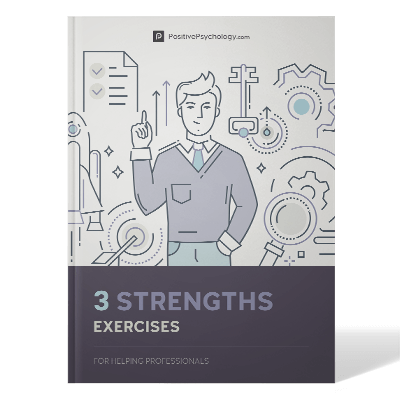
Download 3 Free Strengths Exercises (PDF)
These detailed, science-based exercises will equip you or your clients with tools to discover and harness their unique strengths.
Download 3 Free Strengths Tools Pack (PDF)
By filling out your name and email address below.
Allowing kids to develop their creativity from a young age will give them skills for a lifetime.
1. Value creativity
In the classroom, show your students that you value creativity. This can be done in many ways.
Encourage trial and error on tasks. Thomas Edison famously said, of different trials to solve a given problem, “ I haven’t failed. I’ve just found 10,000 ways that won’t work ” (Daum, 2016).
Sometimes, by finding what won’t work, you are led to what will, as when Edison tried hundreds of materials as microphone transmitters before successfully narrowing the choice to a small carbon disc.
2. Give it time
Valuing creativity also means giving it time in the classroom. Sarah Diaz, a kindergarten teacher in Spain, asserts that adequate time is crucial for creativity, especially for young children (Tornio, 2017). Consider giving students an entire class period each week to work freely on projects and materials they have chosen.
3. Write it down
Lauren Cassini Davis, a second-grade teacher, describes the effect on her classroom of handing out “Da Vinci” notebooks to all students (Davis, 2018). These are empty notebooks in which students are encouraged to write any questions, ideas, or expressions that occur to them, at any time during the day, on any topic, as Leonardo Da Vinci did throughout his long and creative life.
Ms. Davis relates how, within just one week, she was astounded by everything that the students had written in their notebooks. The notebooks were full of questions such as ‘How does your brain work?’ ‘Why do we have music?’ and ‘Why am I not a tiger?’ There were also poems, drawings of inventions, and comments about life in the classroom. These notebooks became a spur to all kinds of creative learning projects.

1. Break boundaries
In 2014, Steve Jobs and Apple unveiled a new corporate headquarters in Cupertino, CA.
According to Johnny Ives, Apple’s chief designer, this headquarters was meant to break down boundaries between offices and occupations.
The new Apple headquarters maximized common pathways and workspaces, allowing people to “ connect and collaborate and walk and talk” (Levy, 2017). It seems to have worked. In 2018, Fast Company recognized Apple as (still) the most innovative company in the world (Safian, 2018).
Fostering creativity takes dedicated time. We noted this above, concerning creativity in the classroom. It also applies to the workplace.
Google, for example, was known for its “20%” program. This program gave software developers and other employees permission to work 20% of their paid time on projects of their choosing. While Google eventually took back this 20% time, it was credited with spawning some of the company’s best products including Google News, Gmail, and AdSense.
Other companies have adopted various approaches to giving creative time in the workplace, with the consensus being that creativity is a business asset, and employees should be given time to explore and develop their new ideas (Subramanian, 2013).
3. Promote trial and error
According to business consultant Deborah Goldstein, creativity in business requires experimentation, and even failure, to be supported. She asserts that “ Experiments never fail. Even when the attempt fails, with the right mindset, teams learn priceless lessons to succeed in the future ” (Forbes Coaches Council, 2017).
In particular art forms, such as painting, work is often solitary. Artists need time and solitude to focus on the act of painting. Yet such solitude can be difficult to bear if not broken by social contact.
Jason Horejs (2020) writes of breaking the isolation that can occur in art. He cites the example of a female painter living in a small town in Montana. This artist speaks of how joining an artists’ group in her area helped her socially and artistically.
The group meets every Saturday to paint together. They regularly hold art shows with constructive critiques of each other’s work. They also have a group website with links to individual artists’ web pages.
Such collective pursuits have helped this artist remain inspired and creative, even when alone in her studio. In the end, it might be some mixture of solitude and collaboration that keeps us creative in art. What of music?
In his autobiography Testimony (2016), Robbie Robertson, guitarist and principal songwriter for The Band , describes how his band was used to creating songs.
Robertson often drafted songs on his own. He sketched “The Weight,” a classic The Band song, by himself in one night. Afterward, he would bring these song ideas to the group.
They worked in close company to flesh the songs out, in the basement of a large pink house in upstate New York. Their group creativity thrived on being able to hear each other’s musical ideas, moment to moment. It was also important for them to see each other’s musical cues.
Robertson then relates how during their first recording session for Capitol Records, band members were separated from each other in the studio. Partitions had been put up to better record the distinct sound of each instrument. However, the band members soon found that without being able to see or hear each other as usual, they lacked the organic sound that had so impressed Bob Dylan and other musicians.
At Robertson’s insistence, the studio partitions were removed. The resultant recordings went on to become the highly creative and acclaimed album Music from Big Pink . The Band had thus found the type of working and studio environment that facilitated creativity for them.
And Robertson had found the interplay between solitude and collaboration that worked best for The Band ’s material. Again, it might be a unique balance of solitude and collaboration that helps us be most creative in art and music.

As nocturnal (versus diurnal or daytime) types, we find the quiet of night refreshing and open with possibilities.
Some well-known “night owls” more inclined to working and innovating after dark include individuals as diverse as Winston Churchill, Christina Aguilera, Bob Dylan, Fran Leibowitz, and Barack Obama (Curtin, 2018).
Giampietro and Cavallera (2007) explored creativity in people inclining toward a nocturnal work schedule. They found nocturnal types scored more highly than diurnals on a task (Torrance Test of Creative Thinking) measuring creativity on dimensions of originality, fluidity, and flexibility of responses.
But take heart, diurnal types.
Plenty of diurnal individuals swear by such pro-daytime habits as rising early and are very creative in their own right. Apple CEO Tim Cook rises at 3:45 a.m., while Oprah Winfrey, Michelle Obama, and General Stanley McCrystal are also early risers, who swear this starts their day off right.
In the end, what counts most is finding the schedule – nocturnal, diurnal, or somewhere in between – that best suits your personality, circumstances, and creativity.
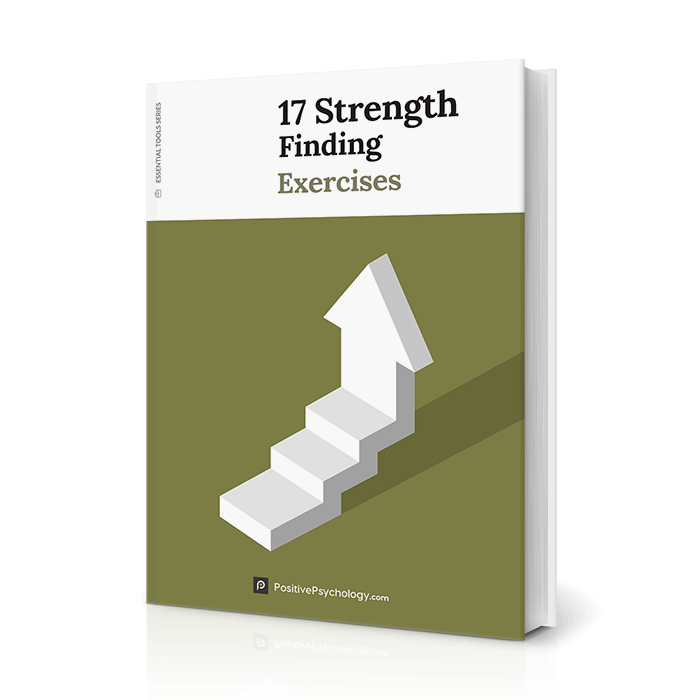
17 Exercises To Discover & Unlock Strengths
Use these 17 Strength-Finding Exercises [PDF] to help others discover and leverage their unique strengths in life, promoting enhanced performance and flourishing.
Created by Experts. 100% Science-based.
The following PositivePsychology.com worksheets might also prove helpful in fostering creativity.
- Visualize Success . This resilience-building exercise invites individuals to engage their creative thinking to visualize successful performance.
- Career Visualization . This exercise is similar to the previous visualization, and is designed to help individuals imagine in a detailed way how it would look, feel, and be to have the career they would like.
- Social Problem Solving . This exercise was developed to help individuals or groups apply brainstorming techniques when solving problems. Clients generate as many solutions as they can to a problem, emphasizing quantity over quality, then assess each possible solution in terms of effort required
- Designing Affirmations Worksheet . This exercise was developed to help individuals creating self-affirmations that can help them help them build self-esteem.
If you’re looking for more science-based ways to help others develop their strengths, this collection contains 17 strength-finding tools for practitioners. Use them to help others better understand and harness their strengths in life-enhancing ways.
Creativity – the ability to bring something original and valuable into the world – is not reserved for a privileged few artists or intellectuals. We all have the potential to be creative. This potential can be cultivated by finding the specific means for enhancing creativity in a given individual or group.
Specific means for an individual might include going for a walk or engaging in relaxation exercises that enhance thinking and creativity.
Means for cultivating creativity in groups might include providing students or employees with Da Vinci-style notebooks for writing down ideas as they occur, designing workspaces that invite collaboration, or setting aside “genius time” for your students’ or employees’ creative pursuits.
In the end, we need to be adaptive and innovative in finding the means by which creativity is enhanced for a particular person, group, or situation.
We hope you enjoyed reading this article. Don’t forget to download our three Strengths Exercises for free .
- Clarke, J. (2018). Breeding ideas. Minds at Work. Retrieved from http://www.mindsatwork.com.au/innovation-2/breeding-ideas/
- Conradt, S. (2012, October 11). Creative breakthroughs people had in their sleep. Mental Floss. Retrieved from https://www.mentalfloss.com/article/12763/11-creative-breakthroughs-people-had-their-sleep
- Curtin, M. (2018, January 30). 7 things night owls do that morning people will never understand. Inc. Retrieved from https://www.inc.com/melanie-curtin/7-things-night-owls-do-that-morning-people-will-never-understand.html
- Daum, K. (2016, February 11). 37 quotes from Thomas Edison that will inspire success. Inc. Retrieved from https://www.inc.com/kevin-daum/37-quotes-from-thomas-edison-that-will-bring-out-your-best.html
- Davis, L. C. (2018, December 17). Creative teaching and teaching creativity: How to foster creativity in the classroom. Psych Learning Curve. Retrieved from http://psychlearningcurve.org/creative-teaching-and-teaching-creativity-how-to-foster-creativity-in-the-classroom/
- Forbes Coaches Council. (2017, December 21). 15 ways leaders can promote creativity in the workplace. Forbes . Retrieved from https://www.forbes.com/sites/forbescoachescouncil/2017/12/21/15-ways-leaders-can-promote-creativity-in-the-workplace/#6d08235f58ef
- Giampietro, M., & Cavallera, G. M. (2007). Morning and evening types and creative thinking. Personality and Individual Differences. 42 (3), 453–463.
- Horejs, J. (2020, April 19). Working alone: Breaking the isolation that can surround the pursuit of art. red dot blog . Retrieved from https://reddotblog.com/working-alone-breaking-the-isolation-that-can-surround-the-pursuit-of-art-19-2/
- Levy, S. (2017, May 16). Inside Apple’s insanely great (or just insane) new mothership. Wired . Retrieved from https://www.wired.com/2017/05/apple-park-new-silicon-valley-campus/
- Lewis, P. A., Knoblich, G., & Poe, G. (2018). How memory replay in sleep boosts creative problem-solving. Trends in Cognitive Sciences, 22 (6), 491–503.
- Ma, X., Yue, Z. Q., Gong, Z. Q., Zhang, H., Duan, N. Y., Shi, Y. T., … & Li, Y. F. (2017). The effect of diaphragmatic breathing on attention, negative affect, and stress in healthy adults. Frontiers in Psychology, 8, 874 .
- McCoy, A. N., & Tan, S. Y. (2014). Otto Loewi (1873–1961): Dreamer and Nobel laureate. Singapore Medical Journal, 55 (1), 3–4.
- Neumann, C. J. (2007). Fostering creativity. A model for developing a culture of collective creativity in science. EMBO Reports 8 (3), 202–206.
- O’Mara, S. (2019). In praise of walking: The new science of how we walk and why it’s good for us. Penguin Books.
- Oppezzo, M., & Schwartz, D. L. (2014). Give your ideas some legs: The positive effect of walking on creative thinking. Journal of Experimental Psychology : Learning, Memory, and Cognition, 40 (4), 1142–52.
- Powers, A. (2018, April 30). Creativity is the skill of the future. Forbes . Retrieved from https://www.forbes.com/sites/annapowers/2018/04/30/creativity-is-the-skill-of-the-future/#1ba564e34fd4
- Provenzano, N. (2015, June 25). Creativity in the classroom. Edutopia. Retrieved from https://www.edutopia.org/blog/creativity-in-the-classroom-nicholas-provenzano
- Robertson, R. (2016). Testimony . Knopf.
- Safian, R. (2018, February 21). Why Apple is the world’s most innovative company. Fast Company. Retrieved from https://www.fastcompany.com/40525409/why-apple-is-the-worlds-most-innovative-company
- Seuss, D. (1960). Green eggs and ham . Beginner Books.
- Subramanian, S. (2013, August 19). Google took its 20% back, but other companies are making employee side projects work for them. Fast Company. Retrieved from https://www.fastcompany.com/3015963/google-took-its-20-back-but-other-companies-are-making-employee-side-projects-work-for-them
- Tank, A. (2019, June 7). I trained myself to be creative by doing these nine things. Fast Company . Retrieved from https://www.fastcompany.com/90360673/i-trained-myself-to-be-creative-by-doing-these-9-things
- Tornio, S. (2017, March 3). Nine teacher-tested ways to encourage creativity in the classroom. We Are Teachers. Retrieved from https://www.weareteachers.com/encourage-creativity-classroom/
- Turiano, N. A., Spiro, A., 3rd, & Mroczek, D. K. (2012). Openness to experience and mortality in men: Analysis of traits and facets. Journal of Aging and Health, 24 (4), 654–672.
- Uzzi, B., & Spiro, J. (2005). Collaboration and creativity: The small world problem. American Journal of Sociology, 111 (2), 447–504.
Share this article:
Article feedback
What our readers think.
I’ve found in my own creative career, that any activity that clears the mind of the daily channel fodder, a lot of it worry based, is essential to allow the juice to flow. An example being that if a life stress hits hard, creativity is impossible. Another base philosophy is maintaining the child’s ability to be curious, unattached/open and make it fun always. Through the eyes of a child. I’ve told many people I see they are creative and they always say “I cannot draw to save my life!” So I think what you have laid out is very useful as the first things to know. It takes away this mystery of being born creative. Well done. By the way I’m a night time creator, originally driven by a total fear of ending up in a factory after school, (fact) braved my way into Art College, committed to working my ass off and realizing that to be creative was mostly desire and great teachers taught you all the formulas for improving a scant talent as presentable work. I now “go” with the first idea that comes into my view/head, no matter what, then work it. Always make at least four options. The more you make the better you get, because your brain makes brand new connections every time you stretch a little. You grow confident re enforced by a passion that is FUN. I go daydream/meditate mode for an hour every night and it works wonders for me personally. I also add chats to myself or others, amongst that mode. For me it’s like an natural method of doing a factory mind reset!
Vassudeva (post on 27 November, 2020),
Thank you for your comment!
I agree that walking is a great technique for fostering creativity. I’m glad you’ve been inspired to walk daily.
It also occurs to me that such walks can be paired with journaling, in a “walk journal” that records any new ideas that came while walking. Probably best to write any ideas down immediately after the walk, so they don’t slip away.
Jeff Gaines
My Major Misconception is now Rectified!! Today I realized Creativity Can be Fostered in anyone at any age..Thanks for the Info. I am now starting to walk daily to improve my Creative Thinking. Various dimensions in which we can foster creativity is well explained. Will be trying-out in my work group.
Thank you for the feedback! I agree we are designed for creativity, even if trends in a given society work to keep us doing rote or mechanical tasks, toward someone’s else’s ends. But the creative potential is there, and I do believe can be cultivated.
loved the article…its a common misconception that creativity is the blessing only a few enjoy, I believe humans have been fundamentally designed for creativity….we just have very different expressions. Infact i have found trapped creative energy as one of the issues while working with those experiencing a low emotional state,
This such reach article with ample ideas for adults and school age as well … It just make you think the opportunities on embarking on creativity journey
Thank you for the comment. I’m glad you found the article thought-provoking! Sincerely, Jeff Gaines
Let us know your thoughts Cancel reply
Your email address will not be published.
Save my name, email, and website in this browser for the next time I comment.
Related articles
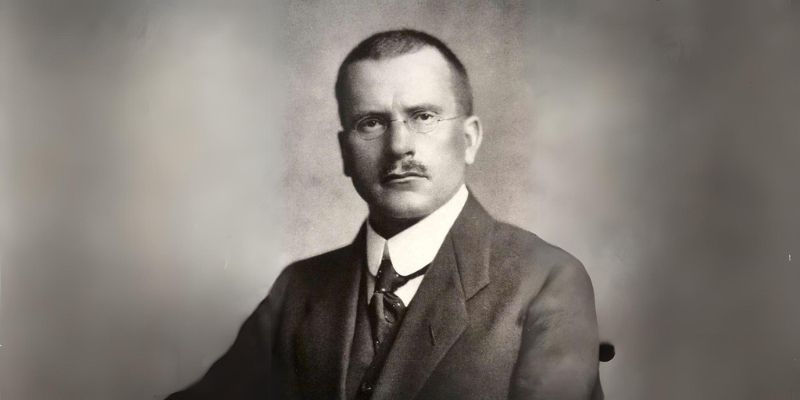
Jungian Psychology: Unraveling the Unconscious Mind
Alongside Sigmund Freud, the Swiss psychiatrist and psychoanalyst Carl Gustav Jung (1875–1961) is one of the most important innovators in the field of modern depth [...]

12 Jungian Archetypes: The Foundation of Personality
In the vast tapestry of human existence, woven with the threads of individual experiences and collective consciousness, lies a profound understanding of the human psyche. [...]
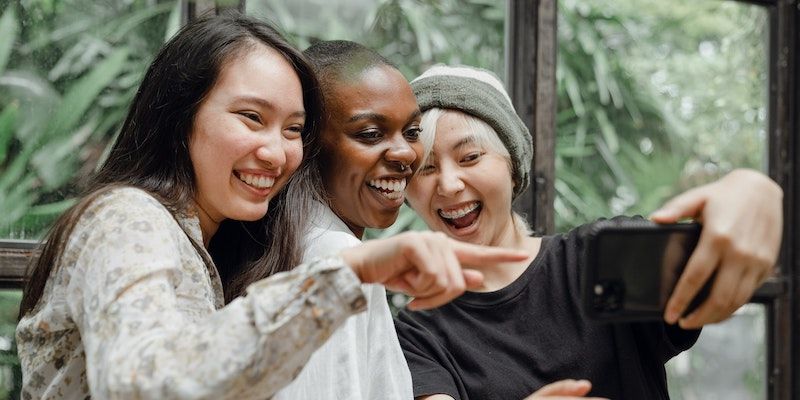
Personality Assessments: 10 Best Inventories, Tests, & Methods
Do you coach or manage a group of vastly different people? Perhaps they respond differently to news, or react differently to your feedback. They voice [...]
Read other articles by their category
- Body & Brain (49)
- Coaching & Application (58)
- Compassion (25)
- Counseling (51)
- Emotional Intelligence (23)
- Gratitude (18)
- Grief & Bereavement (21)
- Happiness & SWB (40)
- Meaning & Values (26)
- Meditation (20)
- Mindfulness (44)
- Motivation & Goals (45)
- Optimism & Mindset (34)
- Positive CBT (30)
- Positive Communication (21)
- Positive Education (47)
- Positive Emotions (32)
- Positive Leadership (19)
- Positive Parenting (15)
- Positive Psychology (34)
- Positive Workplace (37)
- Productivity (17)
- Relationships (44)
- Resilience & Coping (38)
- Self Awareness (21)
- Self Esteem (38)
- Strengths & Virtues (32)
- Stress & Burnout Prevention (34)
- Theory & Books (46)
- Therapy Exercises (37)
- Types of Therapy (64)

Quiz: What’s your creative type?
Share this idea.
- Click to share on Facebook (Opens in new window)
- Click to share on Twitter (Opens in new window)
- Click to share on LinkedIn (Opens in new window)
- Click to share on Reddit (Opens in new window)
- Click to share on Pocket (Opens in new window)
- Click to share on WhatsApp (Opens in new window)
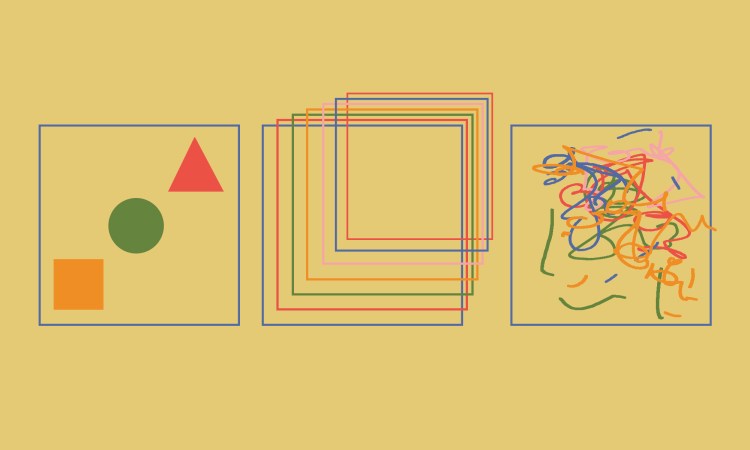
By discovering what drives you, you can tap into your deepest motivations and achieve your full creative potential, says writer and professor Meta Wagner.
About the author.
Meta Wagner writes about pop culture and creativity, and she's been published in The Boston Globe, Huffington Post, Chicago Tribune, Salon and other outlets. Wagner teaches creative and communications writing at Emerson College and Boston University, where she was a 2017 TEDx speaker.
- creative life
- creative process
- Meta Wagner
TED Talk of the Day

How to make radical climate action the new normal

6 ways to give that aren't about money

A smart way to handle anxiety -- courtesy of soccer great Lionel Messi

How do top athletes get into the zone? By getting uncomfortable

6 things people do around the world to slow down

Creating a contract -- yes, a contract! -- could help you get what you want from your relationship

Could your life story use an update? Here’s how to do it

6 tips to help you be a better human now

How to have better conversations on social media (really!)

Let’s stop calling them “soft skills” -- and call them “real skills” instead

3 strategies for effective leadership, from a former astronaut

There’s a know-it-all at every job — here’s how to deal
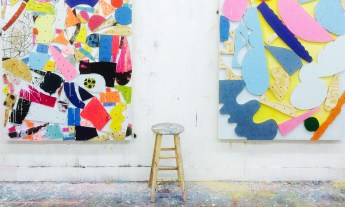
Fear is boring, and other tips for living a creative life

6 ideas from creative thinkers to shake up your work routine
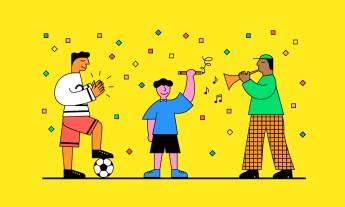
What we can teach boys about strength
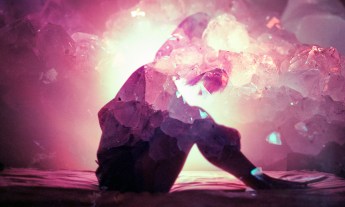
11 book and music recommendations that will ignite your imagination
- Bipolar Disorder
- Therapy Center
- When To See a Therapist
- Types of Therapy
- Best Online Therapy
- Best Couples Therapy
- Best Family Therapy
- Managing Stress
- Sleep and Dreaming
- Understanding Emotions
- Self-Improvement
- Healthy Relationships
- Student Resources
- Personality Types
- Guided Meditations
- Verywell Mind Insights
- 2024 Verywell Mind 25
- Mental Health in the Classroom
- Editorial Process
- Meet Our Review Board
- Crisis Support
How to Boost Creativity
Kendra Cherry, MS, is a psychosocial rehabilitation specialist, psychology educator, and author of the "Everything Psychology Book."
:max_bytes(150000):strip_icc():format(webp)/IMG_9791-89504ab694d54b66bbd72cb84ffb860e.jpg)
Amy Morin, LCSW, is a psychotherapist and international bestselling author. Her books, including "13 Things Mentally Strong People Don't Do," have been translated into more than 40 languages. Her TEDx talk, "The Secret of Becoming Mentally Strong," is one of the most viewed talks of all time.
:max_bytes(150000):strip_icc():format(webp)/VW-MIND-Amy-2b338105f1ee493f94d7e333e410fa76.jpg)
Creativity is the ability to come up with or recognize ideas to solve problems, communicate with others, or entertain.
Creativity is all about finding new ways of solving problems and approaching situations. This isn't a skill restricted to artists, musicians, writers, or "right-brained" thinkers; it is a useful skill for people from all walks of life . If you've ever wanted to boost your creativity , these tips can help.
Commit Yourself to Creativity
The first step to increasing creativity is to devote yourself to developing your creative abilities. Do not put off your efforts. Set goals, enlist the help of others, and put aside time each day to develop your skills. For example, if you are interested in painting, schedule time regularly to learn and practice your skills.
Boost Creativity by Becoming an Expert
One of the best ways to develop creativity is to become an expert in this area. By having a rich understanding of the topic, you will be better able to think of novel or innovative solutions to problems. One way to develop expertise is by reading about creative people and listening to them speak.
Reward Your Curiosity
One common roadblock to developing creativity is the sense that curiosity is an indulgence. Rather than reprimanding yourself for following an internet rabbit hole, reward yourself when you are curious about something. Give yourself the opportunity and the time to explore new topics.
Rewarding yourself is important, but developing intrinsic motivation is also crucial. Sometimes, the true reward of creativity is the process itself, not the product.
Take Risks to Build Creativity
When it comes to building your creative skills, you must be willing to take risks to advance your abilities. Although your efforts may not lead to success every time, you will still be boosting your creative talents and building skills that will serve you well in the future.
For example, sharing your work in a creative writing course might feel intimidating. But the critique you receive from classmates and teachers can be invaluable.
Build Your Confidence
Insecurity in your abilities can suppress creativity, which is why it is important to build confidence. Note your progress, commend your efforts, and always be on the lookout for ways to reward your creativity.
Make Time for Creativity
You won't be able to develop your creative talents if you don't make time for them. Schedule some time each week to concentrate on some type of creative project.
Making time for creativity might involve saying no to some things that are draining your available time, or even choosing to let go of things in your schedule that are not bringing you joy. Sometimes, it might even involve asking others to help with tasks or take care of childcare and other household duties so you have some free time for your creative pursuits.
Overcome a Negative Attitude
Focus on eliminating negative thoughts or self-criticisms that may impair your ability to develop strong creative skills. Recognize these as roadblocks and work to overcome them.
When you find yourself dwelling on negative thinking, make an active effort to challenge those faulty ideas and replace them with more realistic or positive ones.
Fight Fear of Failure
The fear that you might make a mistake or fail in your efforts can paralyze progress. Whenever you find yourself harboring such feelings, remind yourself that mistakes are simply part of the process. While you may occasionally stumble on your path to creativity, you will eventually reach your goals.
Brainstorm New Ideas
Brainstorming is a common technique in both academic and professional settings, but it can also be a powerful tool for increasing creativity.
Start by suspending your judgment and self-criticism. Then start writing down related ideas and possible solutions. The goal is to generate as many ideas as possible in a relatively short span of time. Next, focus on clarifying and refining your ideas in order to arrive at the best possible choice.
As unlikely as this may seem, recent research points to dim light as a trigger for creativity. Darkness may free you from perceived constraints and encourage you to take creative risks that may seem intimidating in bright lighting.
Explore Multiple Solutions
The next time you approach a problem , try looking for a variety of solutions. Instead of simply going with the first idea you have, take the time to think of other possible ways to approach the situation. This simple activity is a great way to build both problem-solving and creative thinking skills.
Keep a Creativity Journal
Start keeping a journal to follow your creative process and track the ideas you produce. A journal is a great way to reflect back on what you have accomplished and look for other possible solutions. This journal can be used to save ideas that can later serve as future inspiration.
Use Mind Maps and Flow Charts
A mind map is a way to connect ideas and look for innovative answers to questions. Create a mind map by writing down a central topic or word. Next, link related terms or ideas around the central word. While similar to brainstorming, this technique allows for branching ideas and offers a very visual way of seeing how ideas are linked.
As you start to develop a new project, create a flow chart to track the project from start to finish. Look for various paths or sequences of events that might occur. A flow chart can help you visualize the final product, eliminate potential problems, and create unique solutions.
Challenge Yourself and Create Opportunities
Once you have developed some basic creative skills, it is important to continually challenge yourself to further advance your abilities. Look for more difficult approaches, try out new things, and avoid always returning to the same solutions you have used in the past.
In addition to challenging yourself, you also need to create your own opportunities for creativity. This might involve tackling a new project or finding new tools to use in your current projects.
Try the Six Hats Technique
The "six hats" technique involves looking at a problem from six differing perspectives. By doing this, you can produce more ideas than you might have had you only looked at the situation from one or two points of view.
- Black hat : Use a negative perspective. Which elements of the solution won’t work?
- Blue hat : Think broadly. What is the best overall solution?
- Green hat : Think creatively. What are some alternative ideas?
- Red hat : Look at the situation emotionally. What do your feelings tell you?
- White hat : Look at the situation objectively. What are the facts?
- Yellow hat : Use a positive perspective. Which elements of the solution will work?
Find Inspiration to Boost Creativity
Never expect creativity to just happen. Look for new sources of inspiration that will give you fresh ideas and motivate you to generate unique answers to questions. Read a book, visit a museum, listen to your favorite music or engage in a lively debate with a friend.
Use whatever strategy or technique works best for you. Do you enjoy video games? Research indicates that playing video games can help increase your creativity.
Consider Alternative Scenarios
When approaching a problem, ask "what if..." questions to consider each possible scenario. If you take a specific approach, what will the outcome be?
By looking at these alternatives beforehand, you'll be better able to develop creative solutions to problems.
Try the Snowball Technique
Have you ever noticed how one great idea often leads directly to another? You can take advantage of this by using a "snowball technique" when you are generating ideas for a project. If an idea isn't appropriate for your current work, set it aside to work on later, or implement it in a future project.
Frequently Asked Questions
Strategies that can help stimulate creative thinking include challenging yourself to think about things differently, engaging in leisure activities that reduce stress, having social interactions with other people, and taking a break from a task to go for a walk.
Give yourself time to be creative. Engage in hobbies and pursue the things that spark your interests. Allow yourself to daydream or imagine different scenarios. Perhaps most important, allow yourself the freedom to pursue different ideas and take risks. Not every idea will pan out, but the process and practice will help you boost creativity and develop a stronger imagination.
Franken RE. Human Motivation . 3rd ed. Brooks/Cole Publishing Company.
Steidle A, Werth L. Freedom from constraints: Darkness and dim illumination promote creativity . J Environ Psychol . 2013;35:67-80. doi:10.1016/j.jenvp.2013.05.003
Tilly M. How to create a mind map (+examples) . The Institute of You.
De Bono E. Six Thinking Hats . Penguin, Limited.
Blanco-Herrera JA, Gentile DA, Rokkum JN. Video games can increase creativity, but with caveats . Creat Res J . 2019;31(2):119-131. doi:10.1080/10400419.2019.1594524
By Kendra Cherry, MSEd Kendra Cherry, MS, is a psychosocial rehabilitation specialist, psychology educator, and author of the "Everything Psychology Book."

Goodwall Blog

Join Now! Download the Goodwall App
You'll be able to register on web soon! For now, download our app on your mobile device for the best experience!
- Self-Improvement
How to be More Creative: 25 Tips for Increasing Your Creativity
Are you looking for ways to boost creativity for your education or career this guide explains how to be more creative for your goals..
Did you know that more than half of CEOs find creativity the most important leadership quality?
We’ve all been victims of the empty page syndrome. Sometimes it feels like the empty page is mocking us. Don’t you wish there was a magic spell for how to be more creative?
Creative block is no joke and it stops us from accomplishing our goals. Boosting your creative thinking skills is just like training at the gym. You have to be consistent in order to see results.
No matter what you do for a living, creativity is your greatest asset. If you want our top creativity tips, keep reading!
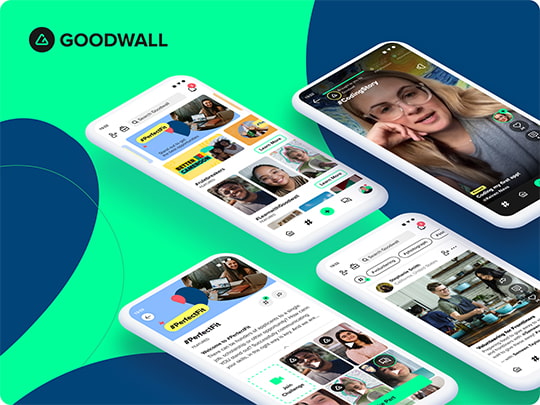
Want to Improve Yourself Each Day?
Sign up to Goodwall!
- Connect with improvement-focused people from 150+ countries
- Build valuable skills and experience
- Ask questions and get support when you need it
Download the app now to get started for FREE!
1. Oblique Strategies.
Though you may not know Brian Eno by his name, you would know the people he produced. Eno is known primarily for his work with David Bowie in the 1970s. However, Eno also had interesting techniques for how to be creative.
In the 1970s, Eno and Peter Schmidt pioneered a tactic for overcoming creative blocks. This tactic came in the form of a deck of index cards with vague advice on them. Eno coined the name “Oblique Strategies” for the deck.
Eno would use this deck in the studio upon reaching a stalemate in the creative process. Notable cards include: “Honor thy error as a hidden intention” and “emphasize repetitions”.
The cards were perfect for giving just enough direction to get new ideas. Yet also lacking specifics so creativity could still flourish.
You can pick up a physical copy of this deck or use a digital copy . The most important part of this deck is to follow the card you pick however you feel it applies to you.
2. Embrace Empty Pages
An empty page is the worst enemy of a creative. Though, as the old saying goes, keep your friends close and your enemies closer.
Don’t think of the empty page as a mocking force, instead, think of it as an opportunity for creativity and art. Nothing will get done unless you do it, so take a step to break the emptiness.
This step could be writing one word or drawing a stick man. Anything to start filling the page.
As a warm-up, fill an empty page with whatever strikes you at the moment. Once you know you can do it, the next page won’t seem nearly as daunting.
3. Keep an Idea Log
Have you woken up to an idea at three in the morning and convinced yourself you’d remember it tomorrow? Did you remember that idea over breakfast or was it lost to the ether?
An easy way to avoid losing these ideas is by keeping a dedicated idea log. This can be a note on your phone or a notepad; so long as you have it all the time. You never know when inspiration will strike, so it’s best to take advantage when it does.
The key thing here is to have all your ideas in one place. Start a note on your phone specifically for ideas. If you’re into compartmentalizing, have a note for every project you have on the go.
Having an idea log is better than just scrawling notes on a napkin. This way all your ideas are in one place.
When you’re lacking inspiration, take a gander through your idea log. At the very least, elaborating on one of your ideas will lead to a better idea.
Related Read : How to Build Self-Esteem: 12 Tips for Increasing Self-Worth & Self-Regard
4. Give Yourself Deadlines
Creativity in business often has deadlines, but if your deadline is further out, it might not feel as real. Suddenly, your deadline is next week and you’re rushing.
Giving yourself deadlines will divide the project into more manageable chunks. Especially with creativity in education, a term paper can seem like a ton of work. Telling yourself you’ll have up to X done by Y point in the semester will break up the work.
This is crucial for those who create as a hobby. So many projects will never get done because they don’t have due dates. Committing to your own deadlines will give you a sense of accomplishment.
If you think that you won’t be able to hold yourself to a deadline, that’s okay! Ask a friend or a family member to hold you to your deadline.
Treat it the same way you would treat a deadline from work or school. If you’re not going to be done on time, ask your friend for an extension. This will hold you accountable and ensure your art gets created.
5. Document Everything
Along the lines of an idea log, this is a great exercise for how to be more creative.
Documenting everything sounds boring, but writing in a journal is documenting. In fact, it’s called creating a primary document.
This is just writing about your day; what happened on a personal level, global level, what have you. When we write, we’re getting creative juices flowing. You also may find some inspiration in the mundane!
6. Find Inspiration From Unlikely Sources
Paul McCartney once wrote a song at the request of Dustin Hoffman based on a Time Magazine article. Of course, McCartney sang the words off the page right in front of Hoffman.
Later on, the song McCartney wrote for Hoffman based on Pablo Picasso’s last words would end up on an album. It’s a strange place to find inspiration, but it proves creativity comes from anywhere.
Reading the newspaper might lead to a beautiful painting. Talking to a kid may lead to a hit song. Never discount the weight of creative inspiration based on the source.
It’s worth your time to look for inspiration everywhere. You never know when it’ll pay off.
Related Read : How to be More Patient: 25 Tips for Increasing Patience in All Parts of Life
7. Goof Off
When you google “how to become more creative” you should also ask yourself “have I broken a rule lately?”. Whether we know it or not, we adhere to rules. Rules have kept humanity alive for thousands of years, but there’s a time and a place.
Try fooling around with your medium like you’re an amateur. When you’re in a creative rut, break the constraints you place on yourself.
There are different options for creative hobbies everywhere. If you’re a writer, try writing a coffee shop AU of your own characters. If you’re a painter, use a risky color palette.
Sure, it’s not productive, but you’ll find ways you’ve never thought of using your medium.
8. Boredom is Your Greatest Resource
A great tragedy of adulthood is that we rarely get the privilege of being bored . When we do, we spend it agonizing over what we could be doing or scrolling our feeds.
Allow yourself to be bored in the absence of your phone. You might be surprised at all the other ways you find to kill time.
Effective use of boredom would be going through your idea log and elaborating on a couple of them. Utilizing boredom as a tool instead of a slump will heighten your creativity tenfold.
9. Cultivate a Community
If you know a quilter, you know that they have a strong community. It takes many to make a quilt so they get together as a group of like-minded individuals to make a quilt.
Now, we’re not saying to become a quilter, but we’re saying to seek inspiration from quilters. Cultivating a network of like-minded individuals is how to find your creativity.
When you have a group of people to bounce ideas off, you can boost your creativity. Surrounding yourself with a network of people who want to create will inspire you to create.
Related Read : How to Improve Memory: 25 Steps to Take to Remember Things Better
10. Be Yourself
Uniqueness is not only what separates you from others, but it’s also what makes your ideas good. When you put a project into the world, you want people to know who made it.
When you have an idea that seems a little outlandish, try seeing it through a bit more. Creativity and uniqueness go together like peanut butter and jelly.
Being yourself will gradually create your personal brand and style. Take the risk and show your authentic self. Your art will thank you.
11. Stay Focused
Getting into the creative zone can seem hard. Try eliminating distractions as best as you can in your workspace.
This will look different depending on who you are and what your project is. If your projects are mostly on your computer, try making a separate desktop on your computer. Keep this desktop clean of distractions like games and online shopping.
You can even take it to the next level! Have a separate google account to personalize your chrome extensions to harbor creativity. This also means that you’ll only get emails related to your creative projects.
Another way to stay focused is to stay as far from your phone as possible. Whenever your phone is near, every notification is a new opening for distraction.
12. Avoid Your Socials
This might seem redundant, but we promise it’s not! Avoiding your socials extends beyond eliminating distraction.
Every time you open your social media, you’re getting influenced by external sources. While this might be good for getting inspiration, it can also make you second-guess yourself.
As a creative, you probably follow other creatives online. These can be everyone from hobbyists to professionals. When you see their work, you might end up comparing your art to theirs.
That can make you second-guess yourself like crazy!
Besides, social media has a tendency to be a breeding ground for nihilism these days. It’s hard to be creative when you’re agonizing over current affairs.
Related Read : How to Improve Posture: 10 Exercises for Young Adults [With Videos!]
13. Deconstruct and Reconstruct
When Descartes was looking for the truth of the self, he went on a crusade of doubt. He doubted until he no longer could. Eventually, he found that the one thing he could not doubt was his existence.
From there, he rebuilt from the doubt. He found that there were two separate pieces of the self. He called them thinking substance and physical substance.
Sometimes when you’re stuck on an idea, it’s beneficial to break everything down to the bare bones. That way, you can expand on the idea from the ground up and iron out the details gradually.
When you deconstruct, you find out what the crucial parts of the idea are. The parts that cannot be excluded. When you reconstruct you’ll know what your actual point is.
14. “Follow the Fun”
“Follow the fun” is a quote from Jordan Peele about how he deals with writer’s block. The advice boils down to if it’s not fun, find a way to make it fun.
Peele goes on to say that if you’re not having fun, then approach your project from another angle. This quote isn’t just for writers! It can be applied to any creative field.
If you find that your heart’s not in what you’re doing, try and find out why. Once you find out why you can approach the scenario in a new way.
15. Don’t Start at the Beginning
This one goes along with following the fun. When you start a project, you don’t have to go in a linear way. Instead, start from where you have the most inspiration.
Especially with creativity in education, it’s hard to write an intro for a paper you have yet to write. Start from the part that excites you. Then, base your project on the section you have written.
This is also the best way to start a project. Any progress is progress, sometimes you have to dive headfirst into the end of a project. It may just be the kick in the butt you need to get things done.
Related Read : How to Improve Handwriting: 10 Great Tips to Up Your Handwriting Skills
16. Tackle Your Inner Critics
We’ve all been there, ready to work. Suddenly the voice of a critic invades your thoughts.
Maybe it was the biting notes in the margins of a paper you poured your soul into. Maybe it’s your dad telling you you’ll never be good enough. No matter, having these inner critics can stop a project before it even starts.
How do you get rid of these inner critics? Anne Lamott spoke about inner critics in her book Bird by Bird.
She recalls a time when her hypnotist told her to imagine her inner critics as mice in jars. He told her to imagine the jars as having volume buttons. Turn one mouse up and listen to it and then turn down the volume.
If the mice in the jars don’t work for you, don’t worry! You can also try personifying your inner critics.
Give these critics faces and names so you can know your enemy. Identify where these insecurities come from. That will give you the opportunity to confront them.
17. Take in Your Surroundings
We now know that inspiration can come from unlikely sources. That can also mean it can come from taking a walk or a drive!
Getting out and moving your body can help you think. Especially when you’re walking or driving a route you’re very familiar with.
Taking the time to be alone with your thoughts can be a meditative experience. Let your thoughts run wild and wait and see how inspired you are when you get back.
18. Don’t Be Afraid to Make Mistakes
When you get hung up on mistakes, whether you know it or not, it paralyzes you creatively. Your rough draft should be rough. A sketch is just a sketch.
Mistakes get fixed later on. The whole point of a first draft is to get the idea out of your head and onto paper. Fearing mistakes is just a mental hurdle that stands in the way of creativity.
How do you get over your anxiety ? There are a couple of ways.
One way is to take the time to do a low-stakes warm-up before you do your work. This will get those jitters out. With time, you’ll start to appreciate the roughness of these warm-ups.
You could also take a page out of the Oblique Strategies book. Honor thy error as a hidden intention. Work with your mistakes to springboard your creativity!
Related Read : 15 Great Benefits of Learning a Second Language (or 3rd, or 4th, or 5th…)
19. Go Down Rabbit Holes
Have you ever been down a rabbit hole that netted approximately zero useful information? If not, try it!
Pick something that interests you and spend an afternoon learning. You can even do this with podcasts while you work.
This can not only be an informative experience, but it can also be inspiring. You might read about something that completely re-contextualizes your project. Taking the time to learn some useless information may even give you an idea for a new project.
20. Beat Perfectionism
Perfectionism is good in theory, but in practice, it’s a detriment . So many projects get held back by not being perfect. Getting paralyzed by trying to achieve perfection is nothing new for creatives.
A way to beat this is by going for a C+ on your project. At the end of the day, nothing is going to be perfect. Think about it this way, a finished project that gets a C+ is better than a perfect project that never gets handed in.
Creativity is imperfect by nature. That’s the beauty of it! Finishing a project not only feels gratifying, but it will make you more creative.
21. Make What You Want in the World
In order to fully harness your creativity, your target audience should be yourself.
As a creative, you probably get hung up on the thoughts of others a lot. While it’s good to consider your audience with your quality of work, your ideas should excite you.
Chances are if you haven’t seen it, it needs to be made! Take a leap and make it. Don’t worry if it’s too niche because there are more than likely people who want what you want as well.
This also allows you to be more imaginative. Making what other people make is suffocating. It’s best to be unique!
Related Read : List of 100+ Best Icebreaker Questions & Conversation Starters
22. Set Medium-Sized Goals
We all know setting goals is a good way to maximize our creativity. That said, consider the size of your goals. Goals that are too big or too small rarely accomplish anything.
The best way to set goals is to have a big goal with a bunch of little goals to help you achieve it. If this sounds familiar, it may be because this is similar to Aristotle’s philosophy: means to an end. Your end is that big lofty goal and your means are the little goals.
Setting these medium goals will enhance your creativity. Not only will you help yourself finish projects, but it’ll give you a bit of structure. Creativity needs structure to truly flourish.
23. Get Out of Your Comfort Zone
Pushing boundaries is nothing new for changemakers. Although pushing your own boundaries is scary, it’s creatively liberating.
If you find that you do something the same way all the time, shake it up! Try to break out of your patterns. Trying a new technique can be the spark that leads to great things!
Complacency can sneak up on all of us. Even shaking up your routine can reframe something from a creative standpoint.
24. Shake Up Your Time and Space
When you’re trying to become more creative, one thing we often overlook is the power rooms have over us. Sometimes, all it takes is to move closer to a window to get the creativity flowing.
Time is also something to look at here. Nine to five is the usual workday, but changing up these hours can make all the difference. You might find that your creativity starts at eight at night.
Shaking up your routine regularly can set you up for more creative success. Worst case scenario, you got fresh air and little done. That’s hardly a loss!
Related Read : 10+ Best Writing Websites, Forums & Writing Groups for Aspiring Authors
25. Daydream
This one feels so painfully obvious. Yet when was the last time you sat and daydreamed?
Daydreaming not only helps you come up with ideas but also changes how you think. Your creative thinking skills will be strengthened no matter what you daydream about!
Before bed, put on some headphones and listen to some music to get you in the zone. From there, it’s up to you!
How to Be More Creative
Becoming more creative is more than just making art. It’s all about changing your frame of mind and finishing projects. When you learn how to be more creative, you’ll see the benefits right away!
If you want to learn more about improving various aspects of your life, check out the rest of our blog !
Download our app today!
Cancel reply.
Your email address will not be published. Required fields are marked *
Write a Response...
Email Address *
Save my name, email, and website in this browser for the next time I comment.
Your Privacy

- Business & Money
- Job Hunting & Careers

Enjoy fast, free delivery, exclusive deals, and award-winning movies & TV shows with Prime Try Prime and start saving today with fast, free delivery
Amazon Prime includes:
Fast, FREE Delivery is available to Prime members. To join, select "Try Amazon Prime and start saving today with Fast, FREE Delivery" below the Add to Cart button.
- Cardmembers earn 5% Back at Amazon.com with a Prime Credit Card.
- Unlimited Free Two-Day Delivery
- Streaming of thousands of movies and TV shows with limited ads on Prime Video.
- A Kindle book to borrow for free each month - with no due dates
- Listen to over 2 million songs and hundreds of playlists
- Unlimited photo storage with anywhere access
Important: Your credit card will NOT be charged when you start your free trial or if you cancel during the trial period. If you're happy with Amazon Prime, do nothing. At the end of the free trial, your membership will automatically upgrade to a monthly membership.
Buy new: .savingPriceOverride { color:#CC0C39!important; font-weight: 300!important; } .reinventMobileHeaderPrice { font-weight: 400; } #apex_offerDisplay_mobile_feature_div .reinventPriceSavingsPercentageMargin, #apex_offerDisplay_mobile_feature_div .reinventPricePriceToPayMargin { margin-right: 4px; } -31% $12.43 $ 12 . 43 FREE delivery Monday, June 3 on orders shipped by Amazon over $35 Ships from: Amazon.com Sold by: Amazon.com
Return this item for free.
Free returns are available for the shipping address you chose. You can return the item for any reason in new and unused condition: no shipping charges
- Go to your orders and start the return
- Select the return method
Save with Used - Good .savingPriceOverride { color:#CC0C39!important; font-weight: 300!important; } .reinventMobileHeaderPrice { font-weight: 400; } #apex_offerDisplay_mobile_feature_div .reinventPriceSavingsPercentageMargin, #apex_offerDisplay_mobile_feature_div .reinventPricePriceToPayMargin { margin-right: 4px; } $11.19 $ 11 . 19 FREE delivery Wednesday, June 5 on orders shipped by Amazon over $35 Ships from: Amazon Sold by: RNA TRADE LLC

Download the free Kindle app and start reading Kindle books instantly on your smartphone, tablet, or computer - no Kindle device required .
Read instantly on your browser with Kindle for Web.
Using your mobile phone camera - scan the code below and download the Kindle app.

Image Unavailable

- To view this video download Flash Player
Follow the author

Creative You: Using Your Personality Type to Thrive Paperback – July 2, 2013
Purchase options and add-ons.
- Print length 320 pages
- Language English
- Publication date July 2, 2013
- Dimensions 7.38 x 0.9 x 9.13 inches
- ISBN-10 1582703655
- ISBN-13 978-1582703657
- See all details

Frequently bought together

Customers who bought this item also bought

Editorial Reviews
About the author, product details.
- Publisher : Atria Books/Beyond Words; Original edition (July 2, 2013)
- Language : English
- Paperback : 320 pages
- ISBN-10 : 1582703655
- ISBN-13 : 978-1582703657
- Item Weight : 15.3 ounces
- Dimensions : 7.38 x 0.9 x 9.13 inches
- #1,253 in Popular Psychology Creativity & Genius
- #2,121 in Job Hunting (Books)
- #3,270 in Popular Psychology Personality Study
About the author
David b. goldstein.
A management consultant, speaker and the originator of the “creative-type” concept, David speaks about how everyone can be creative in their own way using their natural strengths. He is the author of the recent book: Creative You: Using Your Personality Type To Thrive, published by Simon & Schuster in 2013.
To remain competitive, every person and organization needs to act more creatively. David guides clients to become more engaged and productive by finding their unique creative style, and to become better at generating, selecting, and executing ideas. Through his speaking he advises organizations in building collaborative teams within environments that promote innovation.
David is a researcher with a science background and an M.B.A. in Management of Science, Technology and Innovation, who uncharacteristically is also an internationally recognized artist. His exhibits were featured in the South China Morning Post, Where Magazine, Orientations Magazine, and Hong Kong Magazine among others. He was recently commission by the Pan American Health Organization/WHO to create their symbol to promote and protect human rights and David was invited to speak before a global televised audience for World Health Day.
As an entrepreneur for nearly 25 years, David founded an early digital imaging company, pioneered one of the first Internet startups, and created an award-winning web-directory company. David also founded a research firm specializing in intellectual property, providing clients with information on the novelty and infringement of patents. Over the years, he has served as a consultant to technology start-ups, Fortune 500 companies, universities, hospitals, and government agencies. David has spoken at the Association of Psychological International’s Conventions, written for The Bulletin of Psychological Type, and posts the Courageously Creative blog.
Customer reviews
Customer Reviews, including Product Star Ratings help customers to learn more about the product and decide whether it is the right product for them.
To calculate the overall star rating and percentage breakdown by star, we don’t use a simple average. Instead, our system considers things like how recent a review is and if the reviewer bought the item on Amazon. It also analyzed reviews to verify trustworthiness.
- Sort reviews by Top reviews Most recent Top reviews
Top reviews from the United States
There was a problem filtering reviews right now. please try again later..
Top reviews from other countries
- Amazon Newsletter
- About Amazon
- Accessibility
- Sustainability
- Press Center
- Investor Relations
- Amazon Devices
- Amazon Science
- Sell on Amazon
- Sell apps on Amazon
- Supply to Amazon
- Protect & Build Your Brand
- Become an Affiliate
- Become a Delivery Driver
- Start a Package Delivery Business
- Advertise Your Products
- Self-Publish with Us
- Become an Amazon Hub Partner
- › See More Ways to Make Money
- Amazon Visa
- Amazon Store Card
- Amazon Secured Card
- Amazon Business Card
- Shop with Points
- Credit Card Marketplace
- Reload Your Balance
- Amazon Currency Converter
- Your Account
- Your Orders
- Shipping Rates & Policies
- Amazon Prime
- Returns & Replacements
- Manage Your Content and Devices
- Recalls and Product Safety Alerts
- Conditions of Use
- Privacy Notice
- Consumer Health Data Privacy Disclosure
- Your Ads Privacy Choices
Adobe Firefly: everything you need to know about the AI image generator
Adobe Firefly is billed as a more ethical AI image generator. Here's what you need to know.
Adobe Firefly is a suite of generative AI tools developed by Adobe, the creative software giant behind the likes of Photoshop and Illustrator. Like all of the best AI art generators , it involves an AI model that has been trained to recognise connections between text and images in order to allow users to generate imagery using text prompts.
However, Adobe Firefly has a few differences that set it apart from rival offerings such as Midjourney, Stable Diffusion and DALL-E2. Not least there's its claimed 'ethical' credentials. Many AI models were trained on images scraped from the internet with no regard for copyright. Firefly was trained only on open source images, content that is no longer in copyright and content from Adobe Stock.
That's not to say that Adobe Firefly is without controversy. Adobe Stock contributors have also raised concerns about Adobe's use-first-decide-the-price-later approach. But it does mean that Adobe can argue that Firefly is commercially safe - it's even offering to indemnify commercial users against any legal challenges that may arise. But Adobe Firefly also has tools that other AI image generators don't, including the ability to generate vectors and text and integrations in other Adobe programs (see our pick of the best AI art tutorials to learn more about how it works).
Adobe Firefly explained
What is adobe firefly.
Adobe Firefly comprises not one but several AI models that allow users to generate images and other assets using text prompts. You type the words or description and the model will generate images based on your input. It can be accessed directly in a web browser at firefly.adobe.com.
Unlike previous AI models you don’t need to have a Discord account or any knowledge of coding. You simply need to log-in or sign-up for an Adobe account. You can then choose to use a free plan or a premium plan.
Access is also included in Adobe Creative Cloud subscriptions, and some Firefly AI features are included in other Adobe programs, including Photoshop, Illustrator and Adobe Express. For example, Adobe has added Firefly-powered Generative Fill in Photoshop (read our Photoshop review , Illustrator review and Premier Pro review and our Adobe software list for more on the key products).
Is Firefly Adobe's first AI?
Firefly is not Adobe's first foray into AI. if you've already been using Adobe products for a while you may have heard of Sensei: Adobe's AI model that has been incorporated into Photoshop and other Adobe software to improve the productivity and remove some of the more complicated or repetitive tasks associated with digital art as well as video and photo editing.
Adobe Sensei has powered features like the Select Subject tool and neural filters in Photoshop (see our pick of the best Photoshop tutorials ). At this time, this acts separately to Firefly.
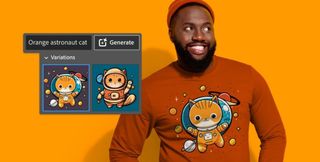
What's new in the latest Adobe Firefly update?
At Adobe MAX in October 2023, Adobe announced some big updates to Adobe Firefly. These include a move to a new version of its image generator, Adobe Firefly Image 2. The new model has an improved understanding of text prompts and recognises more landmarks and cultural symbols. It also offers Prompt Guidance which teaches users to expand or reword prompts, and there are new Share from Firefly and Save to Library features.
Adobe's also added tools to give more creative control for text-to-image generation in the Firefly web application. These include Generative Match, which is intended to allow users to generate content in custom, user-specified styles. Users can pick images from a pre-selected list or upload their own to guide the style when generating new images with text prompts. This aims to allow users to follow brand guidelines or save time by replicating the style of an existing image.
Meanwhile, Photo Settings adds 'photography-style' image adjustments in the Firefly web app. Users can apply and adjust settings in a way that's compared to camera lens controls, for example, depth of field control and motion blur. Adobe's also adding prompt guidance to help users expand or reword prompts for better results.
Other new tools include the Adobe Firefly Vector Model, which can generate an array of editable vector graphics from text prompts, including scenes, subjects, icons, tile-able patterns and even gradients, all organised into groups and layers to make editing easier. There's also a new Firefly Design Model tool that can generate templates from text prompts. Incorporated into Adobe Express, it uses Adobe Stock images and Adobe Fonts and can generate templates in the most popular aspect ratios for print, social and web.
Useful Adobe Firefly features
Another area where Adobe Firefly beats other generative AI art and design tools is in collaboration. The best art collaboration tools for designers include apps such as Figma , but Photoshop only enables people to work work on the same image or doc one at a time. Adobe Firefly's integration into Photoshop will enable multiple artists to work on the same image at once, a little like the excellent Magma .
So, using Adobe Firefly you will be able to make real-time edits, offer feedback and share sketches all at once. This could become more important as you learn to create everything - from images, photos, video and even web design - all in one Creative Cloud app with Firefly connecting everything.
Adobe Firefly generative fill and generative expand
Adobe Firefly Generative Fill in Photoshop (see video above) This basically enables you to select areas of an image and then manipulate them or add in new content using text prompts. The tool is so powerful that it can match light and shadows in the newly generated content to the existing image. There is also a generative expand tool, which allows image to be expanded beyond their original borders.
Is Adobe Firefly ethical?
One of the things that makes Adobe Firefly different to other AI art generators like Midjourney is that it was trained only on copyright-free images - either imagery where copyright has expired or content from Adobe Stock. Contributors to Adobe Stock will be compensated for use of their work and can opt out of their work being used to train the model.
Users of Firefly itself can also apply the 'Do Not Train' tag to stop Adobe from using any imagery that they use with Adobe Firefly to train future models. The idea is that this all makes Firefly more ethical, although everything is relative. Some would argue that it shouldn't be necessary to opt out. There's still a debate on whether AI generators should be trained on any art and images without the explicit permission from the artists.
Adobe has also partnered with the Content Authenticity Initiative (CAI) and with Google's AI, Bard to verify the origins of images being used in Firefly; in theory this means Bard and Firefly will determine if images have been created by a human, AI-generated or AI-edited, and meta data is added to Firefly-generated images to identify them.
Is Adobe Firefly free?
Adobe Firefly can be accessed using a limited free plan. However, like other AI image generators such as Dall-E 2 (and soon Dall-E 3 ), if charges uses credits for each image generation. The free plan includes only 25 generative credits. There is also a premium plan, and access is included in Creative Cloud , but again, users may need to buy more generative credits if they use the tool a lot.
Adobe Firefly AI features
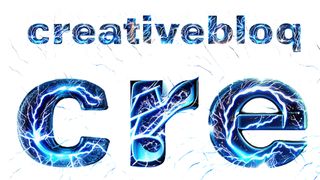
Create 3D text in Firefly
As well as being powerful at creating realistic and unique imagery to inspire or use in your projects, Adobe Firefly has some interesting text and font creation uses. For some designers it could mean not needing knowledge of additional 3D software in order to create 3D text effects for print or animations.
Output images and textures to other Adobe apps
With its integration with other Adobe Creative Cloud applications, such as Photoshop, artists can incorporate AI-generated images into their existing workflows. For example, you can create textures and fractals using Adobe Firefly and bring them into Adobe Capture to create 3D texture maps for models. (Discover more on how to use Adobe Capture .)
Adobe Firefly for 3D art
Adobe Firefly is set to add a tool that can turn simple 3D compositions into photo realistic images and quickly creating new styles and variations of 3D objects, but these are planned feature that have not yet been added. Many digital illustrators already use basic 3D models to decide perspective, but using Adobe Firefly you will eventually be able to devise lighting and bounce lights to reference and improve the detail of an artwork (Read our guide to the best 3D modelling software .).
Text-based video editing is coming
Adobe Firefly is also working on text-based generative video editing. Adobe plans to create functions that enable you to change the mood, atmosphere or colours in video clips. You will even be able to alter the weather and tone, adjust the density of rain, fog and snow. Adobe has already added some AI-driven features to Premiere Pro .
Adobe Firefly is a new kind of generative AI aimed at professionals, creatives and businesses who need to speed up workflows. See the best current prices for Creative Cloud below. Also see our round up of AI art tutorials to learn more.
Get the Creative Bloq Newsletter
Daily design news, reviews, how-tos and more, as picked by the editors.
Thank you for reading 5 articles this month* Join now for unlimited access
Enjoy your first month for just £1 / $1 / €1
*Read 5 free articles per month without a subscription
Join now for unlimited access
Try first month for just £1 / $1 / €1
Ken Coleman lectures in game art and design at Clonmel Digital Campus in Ireland. He also designs for clients such as Catalyst Games and Morbid Angel.
- Ian Dean Editor, Digital Arts & 3D
Related articles
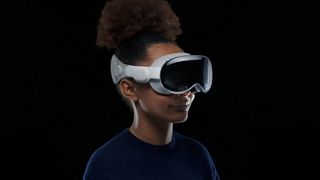
- 2 New leaks show the iPhone 16 Pro Max is the one to get excited about
- 3 I can't get enough of this Lego Star Wars photography
- 4 We've found some record-low deals on the iPad Air 5 in both the US and UK
- 5 The best drawing tablets
- 2 5 new rules for creating effective product names
- 4 Two of our favourite Apple products are at record low prices for Memorial Day
- 5 We've found some record-low deals on the iPad Air 5 in both the US and UK
More From Forbes
How Generative AI Will Change The Jobs Of Artists And Designers
- Share to Facebook
- Share to Twitter
- Share to Linkedin
By definition, artists and designers are creative people. They work in these jobs because they have talent and skills that they love to share with the world.
So, it isn’t surprising that many of them are cautious or distrustful about the impact generative AI will have on their professional lives.
However, like writers, architects, and other creative professionals, many find that it creates opportunities to work more efficiently and even enhance their creativity.
Generative AI is transforming most industries, and the creative fields of art and design are certainly no exception. But by embracing it, artists, designers, illustrators and animators could find themselves spending more of their time on the aspects of their work they are passionate about and less on the routine and mundane elements they'd rather skip over.
This Is Your Last Chance To Shop These 114 Best Memorial Day Sales
Get up to 50 off during the hoka memorial day sale, wayfair memorial day sale the 22 best deals to shop while you still can, increased productivity and efficiency.
According to research by Goldman Sachs, generative AI has the potential to automate 26 percent of the tasks carried out by professional artists and designers.
This is likely to include things like recoloring, editing images to remove backgrounds and unwanted features, enhancing image quality, adapting visuals to fit different style templates, creating multiple variations of existing work for use in different jobs, and generating design elements such as icons, fonts and textures.
It will still be up to the artist or designer to put visual assets together in a way that’s personal to them, but by augmenting their skills in this way, artists will be able to work more quickly and make better use of their time.
Generative AI functionality is also quickly being incorporated into creativity tools and software platforms, like Photoshop and AutoCAD . This makes these tools more user-friendly and intuitive, meaning artists and designers spend less time working out how to get the software to do what they want and more time creating.
For businesses, this will mean quicker project completion, while freelancers will fit more work into their schedules, allowing them to take on more work or offer lower prices to their clients.
Enhancing Creativity
Generative AI can be great for sparking the imagination. Artists and designers staring at a blank page and wondering how to get started may find it useful for suggesting initial concepts, sketches, characters or color palettes. Unusual or unexpected ideas generated in this way could encourage them to take their creativity in new directions and explore uncharted territory!
It can help to overcome “creative block” and think about new ways to approach creative briefs and challenges.
It can give artists and designers an idea of how their work will change if they employ different styles or techniques, allowing them to experiment with new aesthetics and expand their skill sets.
It can even act as a personalized art critic, offering feedback and suggestions on how work can be improved or altered in order to better align with project goals.
While generative AI can’t replace human creativity – and neither would we want it to – it can be used in ways that make us think about what it is that specifically makes work “human”, enabling us to focus on expressing those elements of our work.
New Forms Of Collaborative Art And Design
Generative AI opens the doors to entire new artforms and genres of art. Memories of Passers By I , by Mario Klingemann, became one of the first pieces of entirely AI-generated art to be exhibited publicly when it was unveiled in 2019. It uses a generative adversarial network (GAN) to create a never-ending stream of unique portraits.
More recently, the New York Museum of Modern Art acquired a piece titled Unsupervised Machine Hallucinations by Refik Anadol , which uses generative AI to reinterpret existing works in the museum’s collection.
And the artist Sougwen Chun received acclaim for her project Drawing Operations , for which she built an AI-powered robotic arm that collaborates with her during drawing sessions, learning from her movements and contributing its own strokes in order to create collaborative works of art.
As technology progresses, we can expect to see museums and galleries develop increasingly immersive and interactive experiences, blurring the boundaries between the real and the virtual, as well as artists and audiences. Imagine installations that adapt, depending on who is viewing them, to create personalized experiences, incorporating technologies like augmented and virtual reality alongside generative AI.
Just as the invention of photography gave rise to impressionism, followed by movements such as cubism, surrealism, and pop art, artists working in traditional mediums will have their own response to the arrival of the AI age, creating entirely new artistic frontiers.
It probably isn’t going too far to say that the convergence of human and machine creativity may mark the start of a new chapter in the field of art and design. Rather than stifling human imagination and ingenuity, I believe that it will stoke them, leading to new art forms, genres and movements and forcing us to reassess the age-old question of what exactly constitutes art!
How Will The Roles Of Artists And Designers Change?
Well, let’s start with how they will stay the same. Artists and designers will continue to be responsible for bringing creative visions, concepts and ideas into the world, infusing them with meaning, emotion and relevance.
Nevertheless, they are likely to see their roles change, with the focus shifting toward providing creative direction, conceptualization and critical thinking.
As with other professions, they are likely to need to learn new skillsets in order to work alongside machines effectively and safely. This will include prompt engineering, in order to get the most out of the new tools that are available.
They are also likely to need an understanding of the principles of AI ethics. Particularly, where the line is drawn when it comes to authorship and preserving the essential human aspects of art. But also around IP issues, AI bias and transparency.
Ultimately, while they will embrace new technical skills and adapt to new workflows, the essence of their roles – to channel human perspectives, experiences and feelings into captivating works of art – will remain unchanged.
This is why I believe that the dawn of the AI era doesn’t mark the end of human creativity but the start of a hugely exciting new chapter.
- Editorial Standards
- Reprints & Permissions
Join The Conversation
One Community. Many Voices. Create a free account to share your thoughts.
Forbes Community Guidelines
Our community is about connecting people through open and thoughtful conversations. We want our readers to share their views and exchange ideas and facts in a safe space.
In order to do so, please follow the posting rules in our site's Terms of Service. We've summarized some of those key rules below. Simply put, keep it civil.
Your post will be rejected if we notice that it seems to contain:
- False or intentionally out-of-context or misleading information
- Insults, profanity, incoherent, obscene or inflammatory language or threats of any kind
- Attacks on the identity of other commenters or the article's author
- Content that otherwise violates our site's terms.
User accounts will be blocked if we notice or believe that users are engaged in:
- Continuous attempts to re-post comments that have been previously moderated/rejected
- Racist, sexist, homophobic or other discriminatory comments
- Attempts or tactics that put the site security at risk
- Actions that otherwise violate our site's terms.
So, how can you be a power user?
- Stay on topic and share your insights
- Feel free to be clear and thoughtful to get your point across
- ‘Like’ or ‘Dislike’ to show your point of view.
- Protect your community.
- Use the report tool to alert us when someone breaks the rules.
Thanks for reading our community guidelines. Please read the full list of posting rules found in our site's Terms of Service.
Don't get creative with your resume, says ex-Nvidia recruiter—color is ‘a little gimmicky'
By gili malinsky,cnbc • published 4 mins ago.
When writing a resume, there are multiple expert tips to consider. Make sure to mirror the language in the job description if it's relevant to your experience. Use impactful verbs in describing what you did in each job. Quantify your accomplishments with impressive numbers.
That's all fairly straightforward. But when it comes to trying to make an impression, should you consider adding elements to your resume that make you stand out even more?
For instance, while the standard resume is written in black font, should you consider accent colors like green or purple? Former Nvidia recruiter and current HR consultant Stefanie Fackrell would advise against it . When you do that, "you're just being a little gimmicky," she says.
24/7 New York news stream: Watch NBC 4 free wherever you are
Overall, she says, when it comes to your resume, "make it boring," adding, "no colors, no charts, no graphs, no pictures."
'Nobody really wants a creative accountant'
When it comes to a colorful font, experts agree it really depends on the industry you're in.
Get Tri-state area news and weather forecasts to your inbox. Sign up for NBC New York newsletters.
"If you're an accountant or an IT person, nobody really wants a creative accountant," says Julie Bauke, founder and chief career strategist with The Bauke Group .
U.S. & World

The first Biden-Trump debate of 2024 features new fights between old rivals

Mother pushes 2-year-old girl to safety just before fatal crash at Michigan drag race
That likely goes for other industries, too, like finance and medicine. Keep it to Arial, Times New Roman or Calibri, 11-point, black font on a white or cream-colored resume.
However, when you are in a field "that they're hiring you for your creativity," says Bauke, like graphic design or animation, "you've got more room to play with."
If you're in one of these fields, when you're applying for your next position, ask yourself, are you applying for jobs in which your resume could be an extension of the artistic voice you're trying to convey? If so, what would best help to convey it?
Keep in mind: "It's important to consider legibility, and bright colors can be hard to read," says Octavia Goredema, career coach and author of " Prep, Push, Pivot ."
If you've chosen a color other than black, try printing out your resume to see if it's legible before using it.
Color 'is not going to make any difference in your skills'
If you do add a bit of color, just remember to keep the rest of the resume clean and stick to a traditional format.
"If you've got boxes here and different colors here and arrows going here, and you're trying to be all cute, then I'm all confused," says Bauke. "You want to make sure that it's straightforward, that people can understand what you've done and what you're looking for."
"If you are in doubt about the design you have chosen," says Goredema, "ask someone more senior than you within your industry, ideally someone who makes hiring decisions, to review your resume format."
Plus, and most importantly, "a blue font or black font is not going to make any difference if your skills and expertise and accomplishments are not relevant to the role that you're applying for," says Goredema.
So make sure you're including the relevant experience and impactful bullet points that prove this employer should consider hiring you regardless of purple font, squiggly underlines, or any another quirky design element.
Want to land your dream job? Take CNBC's new online course How to Ace Your Job Interview to learn what hiring managers really look for, body language techniques, what to say and not to say, and the best way to talk about pay. Use discount code NEWGRAD to get 50% off from 5/1/24 to 6/30/24.
Plus, sign up for CNBC Make It's newsletter to get tips and tricks for success at work, with money and in life.

Reviewed by Psychology Today Staff
Creativity encompasses the ability to discover new and original ideas, connections, and solutions to problems. It’s a part of our drive as humans—fostering resilience , sparking joy, and providing opportunities for self-actualization.
An act of creativity can be grand and inspiring, such as crafting a beautiful painting or designing an innovative company. But an idea need not be artistic or world-changing to count as creative. Life requires daily acts of ingenuity and novel workarounds; in this sense, almost everyone possesses some amount of creativity.
- Sources of Creativity
- How to Be More Creative
- Creativity and the Brain
- Creativity and Mental Illness
- Dark Creativity

There are many pieces to the puzzle of creativity, including a balance between controlled, deliberate thought and spontaneous play and imagination . Personality plays a role, as well as biology and life experience.
But everyone possesses some measure of creativity, even if they don’t realize it. Life is full of small moments that require new ideas or surprising solutions. A choice that you don’t think twice about—how you cook a fried egg or the route you take to work—someone else might find delightfully original.
Creative people embody complexity; they show tendencies of thought and action that are segregated in others, according to the pioneering creativity researcher Mihaly Csikszentmihalyi. They balance intense energy with quiet rest, playfulness with discipline, fantasy with reality, and passion for their work with objectivity.
Neuroscience research seems to support this idea. Creative people may better engage the three brain systems —the default mode network , the salience network, and the executive control network—that collectively produce creative thought.
The trait of Openness to Experience correlates with creativity, encompassing a receptivity to new ideas and experiences. People who are low in openness prefer routines and familiarity, while those who are high in openness revel in novelty, whether that is meeting new people, processing different emotions, or traveling to exotic destinations. Accumulating these experiences and perspectives can help the brain forge creative new connections. Other characteristics that are linked to creativity include curiosity, positivity, energy, persistence, and intrinsic motivation.
When we think of creativity, we often think of Mozart, Picasso, Einstein—people with a seemingly fated convergence of talent and opportunity. It's too narrow a set of references, because all sorts of people, possessing various levels of intelligence and natural ability, are capable of engaging in fulfilling creative processes. And buying into a limited definition of creativity prevents many from appreciating their own potential.
Everyday creativity is a framework originally developed by Ruth Richards, Dennis Kinney, and colleagues at Harvard Medical School defined as expressions of originality and meaningfulness. This could encompass daily errands, personal hobbies, or work. Making wacky recipes or dying your hair an unusual color would qualify, as would working on a scrapbook of memories for a friend.
People sometimes refer to “little-c” or “Big-C” to discuss different degrees of creativity. This framework was expanded into a theory called The Four C Model of Creativity by researchers James Kaufman, Ronald Beghetto. Mini-c refers to creativity that arises in any learning process and little-c refers to consistent everyday creativity. Pro-c is the progression to professional expertise in a given domain, while Big-C is reserved for monumental and historic contributions to society.

Many people feel that they have no or very limited creative ability—even some who work in creative fields—and it's true that certain individuals are more creative than others. Fortunately, however, creativity can be acquired and honed at any age or experience level.
Innovation is not some divine gift; it’s actually the skilled application of knowledge in new and exciting ways. It requires changing up your normal routine, stepping outside of typical comfort zones, and paying attention to the present moment.
When learning new information, taking a break—either by sleeping or simply enjoying a distraction—is another way of allowing the unconscious mind to process the data in novel and surprising ways. This often lays the groundwork for a creative insight or breakthrough.
Various lines of research have converged around common insights that provide steps to be more creative:
1. Aim for output: Creative geniuses often produce their best works at their times of greatest output. Some pieces may miss the mark, but the quantity of output makes it likely that other pieces will yield great creativity.
2. Be willing to go deep: In the realm of artistic creativity, pioneers often spend time in solitude, feel emotions and sensations deeply, and aren’t afraid to self-reflect.
3. Be open and playful: The personality trait most tied to creativity is Openness to Experience—whether that be intellectual, aesthetic, or emotional.
4. Capture your ideas: Remember to record thoughts as they arise so they aren't forgotten.
5. Adopt or hire outside perspectives: It can be difficult to innovate if you become trapped in the rules and language of your domain of expertise.
6. Feel free to procrastinate : If you are motivated to solve a problem, procrastinating, exercising, or sleeping on it can lead to divergent thinking and more possibilities.
Most of the time, ideas develop from the steady percolation and evaluation of thoughts and feelings. But every so often, a blockbuster notion breaks through in a flash of insight that’s as unexpected as it is blazingly clear. So-called “aha moments” can generate the brilliant idea for a tech startup, the theme of a musical composition, or the answer to an engineering quandary.
Improving the odds of having a “eureka moment” involves toggling between two modes of thinking: conscious, methodological, concerted problem solving and the restful, spontaneous, unplanned connections of the default mode network, the brain’s resting state. In this way, the default mode network can inspire new solutions when all of the puzzle pieces are in place.
Studies show that training can lead both children and adults to hone creative skills. Sessions may focus on identifying problems to solve, exploring different possibilities, and enhancing emotional intelligence . In one training, for example, instead of making art immediately, children were asked to play with materials—feel their textures, try them out, arrange and rearrange them. Children were encouraged to use emotion -laden memories to explore ideas for art portraying different emotional themes—what colors or textures could be associated with anger?
Several strategies can help build your creative muscle. One is to find a problem that needs solving, and another is to be open to new opportunities, such as trying new foods or using a new approach to complete a task at work. Another is to change your perspective, such as by imagining what somebody else or somebody in a different time period might think. Yet another is to simply create—creativity requires risk-taking and critical feedback, but persisting through discomfort can lead to an innovative and daring outcome.
Creativity may offer some surprising psychological benefits. It can contribute to the ability to make meaning—such as finding ways to successfully cope with past experiences such as trauma , regret, or nostalgia , helping to manage moods, relationships, and problem-solving, and establishing one’s professional and personal legacy for the future. Well-being, in turn, may facilitate creative thinking, such as by practicing mindfulness , research suggests.

Creative thinking involves making new connections between different ideas, which is accomplished by cultivating divergent thinking skills and deliberately exposing yourself to new experiences and to learning. While research psychologists are interested in tapping innovative thinking, clinical psychologists sometimes encourage patients to use artistic expression as a way to confront difficult feelings.
Three key networks operate as a team to spark creativity in the brain, research suggests. The default mode network helps generate ideas, the executive control network evaluates them and propels them forward, and the salience network identifies which ideas are relevant and important. These networks may also influence one another via other feedback loops; for instance, the executive control network might tune the way the salience network scans internally, depending on the task at hand.
The default mode network is the pattern of brain activity that occurs when people are not focused on the outside world. It’s the network that becomes active when the mind turns inward, as people daydream, rest, and reflect on the past or imagine the future. The default mode network can spark connections between different ideas, contributing to creative thought.
The salience network is a large system within the brain that helps to detect and filter important information from the environment , and then determine how to respond to that information. It scans for relevant signals, whether they contain sensory, cognitive, or emotional information. The salience network is rooted in the anterior insula and dorsal anterior cingulate cortex, but it contains nodes in other regions as well.
The executive control network, or executive function, refers to the systems and processes that allow people to plan, monitor, and execute their goals . In the context of creativity, executive functioning monitors the observations, connections, and ideas that are generated, directs attention to particular ideas, and oversees decision-making in the context of a larger goal.
A hallmark of creativity, divergent thinking involves generating multiple ideas or solutions to a problem. It’s original and imaginative, exploring as many different connections as possible. By contrast, convergent thinking is converging onto a single, correct answer or solution, by analyzing the information available and judging which answer is best.
The belief that the left hemisphere completely controls logic and the right brain governs creativity is largely a myth. Creativity and imagination involve communication between networks throughout both hemispheres, research shows. Those networks work together and collectively manipulate ideas, images, and symbols.

From Vincent van Gogh to Sylvia Plath and Winston Churchill, individuals with mental illness have unleashed intellectual and artistic genius throughout history. The connection has fascinated psychologists and everyday individuals alike. What biological theories might explain the overlap? And what evolutionary advantages might these individuals possess?
Psychotic spectrum disorders, including bipolar disorder , schizotypy, and schizophrenia, are disproportionately diagnosed in highly creative individuals (they've been most often measured in artists, musicians, and writers) or in their first-degree relatives.
But this connection can be confounded by the degree of giftedness at play. While creative types are more mentally stable than are non-creatives, the correlation reverses in the presence of exceptional creativity. Extraordinarily creative individuals are more likely to exhibit psychopathology than are noncreative people, according to University of California at Davis psychologist Dean Keith Simonton. He dubs this concept the "Mad Genius Paradox."
An inability to filter out seemingly irrelevant information is a hallmark of both creative ideation and disordered thought. The state, known as reduced latent inhibition, allows more information to reach awareness, which can in turn foster associations between unrelated concepts. The barrage accounts for both the nonsensical ideas seen in psychosis and for novel thinking.
One hypothesis for the mystery between genius and mental illness is rooted in the diametric theory, an idea put forth by sociologist Christopher Badcock and evolutionary biologist Bernard Crespi to explain how autism and schizophrenia are poles on one cognitive continuum. (In this theory, paternal gene expression pushes towards mechanistic thinking—autism at its most extreme—and maternal genes produce mentalizing traits—psychosis at its most extreme.)
The theory makes a key prediction—that epoch-making minds, likely including John Nash's and Isaac Newton's, exhibit both hypermechanistic and hypermentalizing extremes. These men were both autistic and schizophrenic—double outliers. True genius in some realms, especially mathematics and science, could represent that unique overlap.
Some research has found that genetic variants that are more common in schizophrenia and bipolar disorder are also more common in certain creative professions. However, it’s difficult to conduct reliable studies of the link between genetics and a broad trait like creativity. What we do know, however, is that many mental health conditions, including schizophrenia and bipolar disorder, have a genetic component, so the condition and potentially related traits are passed down from one generation to the next.
Bipolar disorder and schizophrenia can be debilitating illnesses, so scientists have wondered why these conditions have persisted over time. Some believe that schizophrenia and bipolar disorder offer an evolutionary advantage, in that they predispose individuals to greater creativity, achievement, and success that can benefit both individuals and societies.
People with bipolar disorder can be deeply concerned that medication will strip away the creativity and productivity that accompany manic episodes . Therefore it’s important to address the topic in therapy .
Therapists should explain that manic energy can be confused for creative skill; mania often deludes individuals into believing they are greater than their skills. The pair can discuss the patient’s innate talents and skills to develop, and then devise a strategy to do so following mood stabilization, continuing to adapt to new circumstances or challenges as they arise.

Creativity is typically seen as a socially beneficial trait. But some people use their imagination in pursuit of antisocial ends—what's sometimes termed “dark creativity” or “malevolent creativity.”
A scam artist who devises a novel or foolproof scheme for luring his victims is exercising creativity. But as it’s being deployed to harm others and enrich himself, most observers would find his scheme objectionable, no matter how imaginative.
In recent years, researchers have sought a greater understanding of how darkness and creativity interrelate. Some studies have found that creativity is associated with narcissism ; others have identified a link between higher creativity and reduced honesty and humility. In one study, dispositional creativity was found to predict unethical behavior.
Ultimately, creativity may be better conceived as neither inherently positive nor inherently negative. Instead, it may be best to assess motivations and outcomes when judging the value of any creative act.
One distinction between light and dark creativity involves who benefits and who stands to be harmed by the creative pursuit. Light creativity is associated with ways to benefit others in society, or at least not detract from their welfare, such as composing a moving symphony or founding a tech start-up. Dark creativity is primarily associated with harming others or helping oneself without caring about the potential for collateral damage—devising an elaborate plot to rob a store, for example.
Malevolent creativity has been linked to childhood experiences, such as neglect, and traits in the dark triad , such as narcissism. Another characteristic linked to dark creativity is aggression . In one study, premeditation (planning ahead of time) controlled an individual’s expression of malevolent creativity more than implicit aggression—in other words, being able to hold off on your impulses can make even those primed to be aggressive and darkly creative less harmful when provoked.
Some argue that creativity exists on a spectrum and creative pursuits can exist in the gray area between light and dark. For example, if someone comes up with a clever white lie to avoid meeting someone, that original and plausible idea might lean toward a darker use of creative thinking. The grayer areas of creativity arise when it’s not completely clear where the eventual benefit of the creative behavior lies. For example, is hacktivism bright creativity or dark?
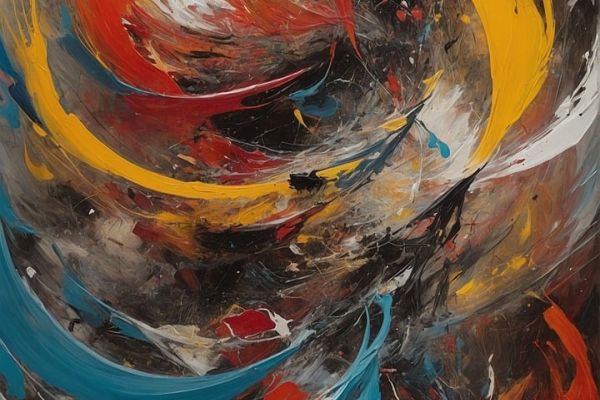
The clues used for creating cryptic crosswords constitute in themselves a genre of word puzzles. Solving these invariably produces a sense of pleasure that is exceptional.
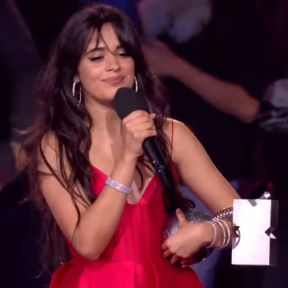
Camila Cabello has a surprising take on obsessive-compulsive disorder (OCD). It just might expand your mind.
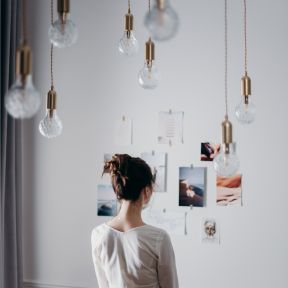
Vision boards can help us bring about behavioural change.

Children are naturally creative; however, as we grow up, we become less so. We can regain those creative instincts when we practice small creative acts every day.

Difficulty trusting one's happiness is common in bipolar disorder. How can one fully embrace their joy without fear of mania?
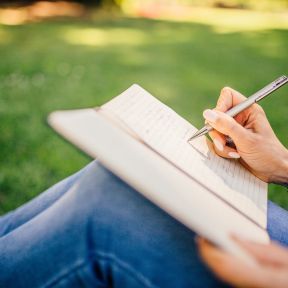
Can psychiatrist-novelists write more psychologically-realistic characters?

Students often feel stuck at the beginning of their research projects; here is a strategy to keep moving forward.

Storytelling can make dialectical behavior therapy more engaging and effective.

It’s not what you “get” out of college that changes your life; it’s what you’re given. Knowledge, curiosity, an appetite for learning and perspective are portable property.
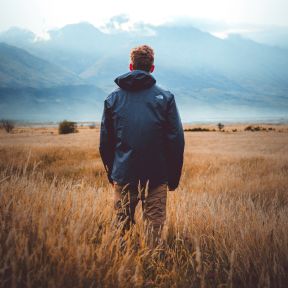
A Personal Perspective: Writing can help us re-frame negative happenings, gain sovereignty over our circumstances, and uncover meaning in adversity.
- Find a Therapist
- Find a Treatment Center
- Find a Psychiatrist
- Find a Support Group
- Find Online Therapy
- United States
- Brooklyn, NY
- Chicago, IL
- Houston, TX
- Los Angeles, CA
- New York, NY
- Portland, OR
- San Diego, CA
- San Francisco, CA
- Seattle, WA
- Washington, DC
- Asperger's
- Bipolar Disorder
- Chronic Pain
- Eating Disorders
- Passive Aggression
- Personality
- Goal Setting
- Positive Psychology
- Stopping Smoking
- Low Sexual Desire
- Relationships
- Child Development
- Self Tests NEW
- Therapy Center
- Diagnosis Dictionary
- Types of Therapy

At any moment, someone’s aggravating behavior or our own bad luck can set us off on an emotional spiral that threatens to derail our entire day. Here’s how we can face our triggers with less reactivity so that we can get on with our lives.
- Emotional Intelligence
- Gaslighting
- Affective Forecasting
- Neuroscience
- SUGGESTED TOPICS
- The Magazine
- Newsletters
- Managing Yourself
- Managing Teams
- Work-life Balance
- The Big Idea
- Data & Visuals
- Reading Lists
- Case Selections
- HBR Learning
- Topic Feeds
- Account Settings
- Email Preferences
All Business Strategies Fall into 4 Categories
- Jerome Barthelemy

Some are more creative than others.
The problem with strategy frameworks is that although they can help you determine whether an opportunity is attractive or whether a given strategy is likely to work, they generally don’t help you in the task of identifying the opportunity or crafting the strategy in the first place. This article introduces a framework, built on an in-depth analysis of the creativity literature, that aims to fill that gap by providing a systematic approach to identifying potential strategies. The framework categorizes all strategies into the following four groups, from the least creative to the most creative: adapting an existing industry strategy, combining different existing industry strategies, importing strategies from other industries, and creating a brand new strategy from scratch.
The problem with strategy frameworks is that although they can help you determine whether a given opportunity is attractive or whether a particular strategy is likely to work, they generally don’t help you in the task of identifying the opportunity or crafting the strategy in the first place. As the legendary strategy expert Gary Hamel put it: “ The dirty little secret of the strategy industry is that it doesn’t have any theory of strategy creation .”
- Jérôme Barthélemy is Executive Vice-President, Dean for Post Experience Programs, Corporate Programs and Relations and Professor of Strategy and Management at ESSEC Business School. He is the author of Myths of Strategy (Kogan Page, 2023)
Partner Center
Kristen Wiig Says Watching Carol Burnett on TV Planted Her ‘First Creative Seeds’: ‘It’s Like You’re My Oldest Friend’
By Selena Kuznikov
Selena Kuznikov
- Sideshow, Janus Films Acquire North American Rights to Alain Guiraudie’s ‘Misericordia’ Out of Cannes 2 days ago
- Anamaria Vartolomei Talks ‘Being Maria,’ Fighting for Change Within the Entertainment Industry at Cannes 2 days ago
- American Cinematheque’s Richard Roundtree Retrospective Includes His Final Film ‘Thelma’ – Film News in Brief 2 days ago

Kristen Wiig presented Carol Burnett with the Lifetime Achievement Award Tuesday night at the Gracie Awards in Beverly Hills, hosted by the Alliance of Women in Media Foundation.
“As the little me watched ‘The Carol Burnett Show’ in awe, the first creative seeds were planted,” Wiig said while presenting the award to Burnett. “So Carol, in many ways it’s like you’re my oldest friend, but also you are my oldest friend. It’s been an absolute honor and joy to work alongside you, Carol, in ‘Palm Royale.’ And I mean this, no one plays coma patient like you.”
Popular on Variety
Burnett also teased a second season of “Palm Royale,” explaining how much it meant to her for Wiig to present her with the award: “I was so fortunate to get to work with her. I think we’re gonna do it again.”
The event, hosted by Tamera Mowry-Housley, honored the achievements of women across many media platforms. This year’s theme was focused on “Feminine Strength, both Large and Small,” highlighting impactful actions from women.
Rachel Platten, singer of the 2015 single “Fight Song,” performed her song “Girls” at the event. Winners and presenters included Jane Fonda, Natalie Morales, Sheryl Underwood, Yvette Nicole Brown, Mayan Lopez, Melissa Peterman, Emma Kenney, Danielle Pinnock, Amanda Kloots, Lauren E. Banks, Sharon Carpenter, Allison Holker, Christina Elmore, Kim Fields, Betsy Brandt, Sutton Stracke, Crystal Kung Minkoff and Amy Chozick.
More From Our Brands
Tim scott insists trump is gaining popularity after libertarians viciously boo him, dodgers star shohei ohtani scores a socal estate for $7.8 million, glen taylor played a role in some of nba’s biggest business stories, the best loofahs and body scrubbers, according to dermatologists, evil bosses tease the hitch in leland’s diabolical plan that ‘never once crossed his mind’, verify it's you, please log in.

Art shaped by Minecraft
DAY 12: Watch five artists create Minecraft-inspired art
What do you get if you combine five artists, five art forms, and one blocky game? You get cubism! Just kidding. You get a mini documentary featuring the process of five wildly creative and utterly different works of art inspired by Minecraft . So that’s exactly what we did! And today, on day 12 of our anniversary celebration, this documentary is finally out.
Five artists. Five art forms. One very blocky game.

In this short documentary, we follow our five artists, all with various degrees of experience playing Minecraft, as they travel across biomes in search of that spark of inspiration. They take us behind the scenes of their creative processes as they use Minecraft to inspire the creation of a new piece of art . Considering it’s virtually impossible to play Minecraft without using your creativity, artists feel like they were born to be in the Overworld. How they choose to tackle their blocky adventure is a whole other question! From receiving the initial brief to entering the Overworld then planning their piece, getting to work in their medium, and finally presenting the final artwork to each other, this will be a wild ride!
So who are these five brilliant minds?
Camila Salina is a Mexican-American artist from Texas who uses mixed media to create pretty extraordinary self-portraits from quite ordinary, everyday moments.
Elliot Ulm is the creative mind from Australia using graphic design combined with a healthy dose of sarcasm and humor to wow the world.
Kenza Trasf i is a French artist and pretty much the queen of customization . Sneakers, skateboards, game controllers – name it and she can customize it!
Filippo Giusti is the Mexico-based painter using what he calls essentialism to not only capture the look of his subject but the essence and colors within.
Environmentally conscious architect and designer Benjamin Uyeda sources materials from his surroundings you’d never look twice at and turns them into incredible furniture.

Watch the mini documentary now to see how these five artists inject Minecraft into their process to create works of art in their mediums.
But the creative output doesn’t stop there! Several international artists are playing Minecraft to create new art including Berlin painter Luisa Carolina , Tokyo manga artist Shinn Uchida , São Paulo mural artist Deco Farkas , German multimedia and graffiti artist Bond Truluv , and Japanese watercolor artist Harumichi Shibasaki . Head to their accounts to see what the Overworld inspired them to create, and who knows, perhaps these will spark something creative in you?
TODAY’S FREE CHARACTER ITEM: NETHER PANTS
.jpg)
I’m no fashion expert, but why would you step through a Nether portal when you can step into a pair of Nether pants instead? Crafted with precision from premium materials (which we can only assume are 2D pixels, soul sand, and strider strings), these pristine pants boast a sleek design that will have your friends craving for another tour to the Nether. Did we mention that the belt buckle is a (purely decorative) Nether portal?! All you need to do to claim today’s extravagant attire is to boot up Minecraft: Bedrock Edition after 10am PST/7am CET , open the Dressing Room where you’ll find your shiny new character creator item, and take those new Nether pants for a strut around the block.
With all this creativity flying around, how will you use your next Minecraft session to shape your world? Some bespoke creeper sneakers? A chocolate dirt hut bake? A square trim for your dog? This blocky world is very much your oyster, so see you back here tomorrow to continue celebrating 15 years of Minecraft.
SHARE THIS STORY
Community creations.
Discover the best add-ons, mods, and more being built by the incredible Minecraft community!
Block...Block...Block...
- Share full article
Advertisement
Supported by
Here It Comes: Another Hot Summer in Europe
Extreme heat and other weather challenges are in the forecast this summer, and travel advisers, tourists and local officials are getting prepared.

By Ceylan Yeğinsu
Europe, the world’s fastest-warming continent, is headed for another scorching summer, meteorologists warn. And travelers, once again, are heading to the hot spots.
Last year, large parts of southern Europe experienced prolonged periods of extreme heat with temperatures reaching 118 degrees and lasting up to two weeks or more. The sweltering conditions upended vacations throughout the summer season as visitors collapsed from heat exhaustion at crowded tourist sites, and wildfires led to evacuations in Greece, Italy and Spain.
“Our computer models are in good agreement that it’s going to be another unusually hot summer, especially during late July through August,” said Todd Crawford, vice president of meteorology at Atmospheric G2 , a weather and climate intelligence firm based in Manchester, N.H. The company expects the magnitude of the heat to be similar to 2022, the hottest summer ever recorded in Europe, with the most anomalous heat projected in the south, in popular countries for travelers like Greece, Croatia and Italy.
Since 1991, Europe has been warming at twice the global average, and 23 of the 30 most severe heat waves in Europe since 1950 have occurred since 2000, with five in the last three years, according to the World Meteorological Organization. The European Union's Copernicus Climate Change Service said several factors contribute to the continent’s vulnerability, including the proportion of European land in the Arctic — the fastest-warming region on earth — and changes in atmospheric circulation.
Yet despite the forecast and increasing trend of excessive summer heat, demand is still high for destinations where temperatures reached 100 degrees or higher in recent summers. Overall, U.S. demand for travel to Europe has increased since last year, according to the travel site Hopper . Rome, Paris and Athens are among the most searched cities out of billions of annual searches for summer vacations on Kayak and Expedia.
“The destinations are being booked again, and what really characterizes people is how quickly they forget and push back negative experiences,” said Stefan Gössling, a professor who researches tourism and climate change at Linnaeus University in Sweden. “People who were caught in life-threatening situations like the wildfires may reconsider where they travel, but for the broader population, we are not yet seeing a big change in decision-making because of the heat.”
Green spaces and heat officers: Cities adapt
As the summer approaches, popular destinations that were hit hard last year are working on protocols to make residents and tourists safe and more comfortable. In 2021, Athens became the first European city to appoint a chief heat officer to oversee those efforts. One of the first steps was to categorize heat waves by severity, like hurricanes, as an early warning system for the potential impact on human health. It is also naming heat waves to emphasize their potential risks.
“Heat is a silent killer and projections for the coming years show that it will only get worse, so we are redesigning our city and making changes to adapt,” said Elissavet Bargianni, the chief heat officer for Athens. Beyond raising awareness, the city plans to implement additional measures, which include increasing the number of green spaces and creating cool public areas.
For visitors planning to visit Athens this summer, Ms. Bargianni advises using the Extrema Global app that calculates the coolest route for getting from point A to point B according to the current temperature and density of the trees. The city already has several air-conditioned cooling centers that are free.
During last July’s heat wave, the Acropolis was forced to close between midday and the early evening to protect visitors after some of them collapsed from the heat. The ministry of culture could make the same decision this year, Ms. Bargianni said, if the heat is severe.
Heat and tours: Travel advisers get creative
Travel advisers are also factoring heat into flexible itineraries. In cities like Rome, Barcelona, Paris and Athens, they are scheduling sightseeing in the cooler morning and evening hours, and arranging air-conditioned transportation.
“We tend to do activities and tours in the morning, then stop for lunch, and in the mid- to late afternoon you either go back to the hotel to sit by the pool or go to the beach,” said Gary Portuesi, a co-managing partner at Authentic Explorations, a New York-based travel company that specializes in Europe.
If clients insist on taking midday tours, the company will work with local partners to make the experience as comfortable as possible. “If there is a six-hour tour, for example, they will cut it down to four and take them to an air-conditioned gelateria for a break,” Mr. Portuesi said.
It is not only the heat that travel advisers have had to grapple with, but also other unpredictable weather events. Last summer, while some parts of the continent were hot and dry, others were cold and wet. “There was a period during the summer peak when it was hotter in the Dolomites than it was in Sicily,” said Jennifer Schwartz, the Italy-based partner of Authentic Explorations. “The most important aspect of our job is to set expectations about the variables and guide people instead of saying it’s too hot, don’t come.”
Heat insurance?
To help travelers book with more confidence, Sensible Weather, a Los Angeles-based start-up that provides a weather guarantee for vacations and outdoor experiences, has recently added high heat protection to its coverage. When booking through a Sensible partner, travelers will be able to add daily protection and if the temperature exceeds a threshold — usually set between 90 and 100 degrees — they can claim reimbursement. Currently, the insurance is only available in the United States, but, the company said, will gradually be rolled out in Europe and elsewhere.
“The goal of the company is to cover everything that can ruin a trip, and usually it’s rain, but temperature is number two,” said Nick Cavanaugh, the company’s founder who was developing the product while caught in a heat wave in Barcelona last year.
Customers do not need to cancel their trip in order to be reimbursed. Those on package tours are reimbursed for the average daily rate of their entire trip for each day that surpassed the heat threshold. “Our customers can still go on their vacations, but if it’s too hot for some hours of the day and unpleasant to go outside, you can hang out in the air-conditioning and we will reimburse you,” Mr. Cavanaugh said.
Heading to cooler climes
Some travelers who were caught in Europe’s heat waves last summer are seeking cooler destinations this summer in places like Norway, Slovenia, Switzerland, Sweden and Finland. Flight searches for Tromsø, Norway, for example, have increased by 85 percent over 2023, according to Kayak.
Joanna Walker, a 43-year-old recruiter from Boston, was caught in a blistering heat wave with her family in Italy last July and vowed never to return during the summer. She said she had been advised to travel during the shoulder season, but couldn’t because her children were in school.
“We couldn’t even cool off in the pool because there was no shade and the water was hot,” Ms. Walker recalled. “We wanted to see the sights in Florence and have long lunches in the piazzas, but instead we were stuck in our overpriced villas under the air-conditioning.”
This year her family has booked a tour of Norway’s fjords in July, where temperatures linger in the high 60s. “It’s going to be a different vibe to Italy for sure, lots of nature and not as much history, but at least it will be cool enough to experience something.”
Follow New York Times Travel on Instagram and sign up for our weekly Travel Dispatch newsletter to get expert tips on traveling smarter and inspiration for your next vacation. Dreaming up a future getaway or just armchair traveling? Check out our 52 Places to Go in 2024 .
Ceylan Yeginsu is a travel reporter for The Times who frequently writes about the cruise industry and Europe, where she is based. More about Ceylan Yeğinsu
Explore Our Weather Coverage
Extreme Weather Maps: Track the possibility of extreme weather in the places that are important to you .
Heat Safety: Heat waves are becoming increasingly common across the world. Here is how to keep yourself and your loved ones cool, hydrated and healthy .
Tornado Alerts: A tornado warning demands instant action. Here’s what to do if one comes your wa y.
Flash Flooding: Fast rising water can be deadly. Here’s what to do if you’re caught off guard , and how to prepare for a future flooding event.
Evacuating Pets: When disaster strikes, household pets’ lives are among the most vulnerable. You can avoid the worst by planning ahead .
Climate Change: What’s causing global warming? How can we fix it? Our F.A.Q. tackles your climate questions big and small .

IMAGES
VIDEO
COMMENTS
"Welcome to Creative for you . this is your destination for high-quality electronic tutorials! Our channel specializes in providing step-by-step instructions on how to create electronic devices ...
See the strengths of those around you - find out who has the skills to bring your project to life! Discover projects and jobs you're the perfect fit for. Connect with other emerging talent beyond your course and campus; widen your network and help each other develop well rounded skillsets.
Action Step: Generally, you'll want to take a silent break in place of your normal break or during periods of creative slumps. I like to set a timer for 5 to 10 minutes and sit alone. You can even meditate if you'd like. Bask in the silence and let your mind do its thing.
10. Thinking differently. Creative people are united by their unwillingness to abide by conventional ways of thinking and doing things. In choosing to do things differently, they accept the possibility of uncertainty and failure—but it is precisely this risk that opens up the possibility of true innovation.
Creativity Improves Mental Health. Expressing yourself through artistic and creative activities is like a prescription for your mental health. Turning to creativity has been proven in extensive research to relieve both stress and anxiety. Creativity also helps lessen the shame, anger, and depression felt by those who have experienced trauma.
4. Go outside: Spending time in nature and wide-open spaces can expand your attention, enhance beneficial mind-wandering, and boost creativity. 5. Revisit your creative ideas: Aha moments can give you a high—but that rush might make you overestimate the merit of a creative idea.
Overall, creative output was found to improve by about 60% when walking (either indoors or out), versus sitting. So, if you're looking to boost your creativity, try going for a short walk - or a long one. 2. Set task limits. This idea is borrowed from an entrepreneur who called it " embracing constraints" (Tank, 2019).
About the author. Meta Wagner writes about pop culture and creativity, and she's been published in The Boston Globe, Huffington Post, Chicago Tribune, Salon and other outlets. Wagner teaches creative and communications writing at Emerson College and Boston University, where she was a 2017 TEDx speaker. blog. creative life.
In so many ways, our thinking has become standardized, predictable, and convenient. "Thinking outside the box" is not what we do well. On the other hand, you can use the statements above to ...
The first step to increasing creativity is to devote yourself to developing your creative abilities. Do not put off your efforts. Set goals, enlist the help of others, and put aside time each day to develop your skills. For example, if you are interested in painting, schedule time regularly to learn and practice your skills.
Spend time in nature, take in a sunset, appreciate the beauty of a flower or lose yourself in music or artwork, and these will in turn inspire your creativity and happiness. Get physical. Exercise ...
You can use the creativity beatitude, "Blessed are the creative, for they spark fresh choices and new growth" (Niemiec, 2021), to inspire your strength of creativity and to appreciate the strength ...
2. Embrace Empty Pages. An empty page is the worst enemy of a creative. Though, as the old saying goes, keep your friends close and your enemies closer. Don't think of the empty page as a mocking force, instead, think of it as an opportunity for creativity and art.
Being creative means possessing curiosity, the ability to observe keenly, and a passion for innovation to move about in space and time in new ways. It means trying something different, which ...
Creative You is an extremely well written book that helped me to better understand myself and others, while also providing much motivation. The authors do a great job in explaining each personality type, making it quite easy to quickly identify my own. I had several "Wow" moments while reading this book!!
Creativity is the ability to think about a task or a problem in a new or different way, or the ability to use the imagination to generate new ideas. Creativity enables you to solve complex problems or find interesting ways to approach tasks. If you are creative, you look at things from a unique perspective.
Creative For You - YouTube. 585 likes. amazing video and cool projects visit now https://youtube.com/channel/UCLutfEWSX4kxK4Ds9zndGYA
With its integration with other Adobe Creative Cloud applications, such as Photoshop, artists can incorporate AI-generated images into their existing workflows. For example, you can create textures and fractals using Adobe Firefly and bring them into Adobe Capture to create 3D texture maps for models.
However, like writers, architects, and other creative professionals, many find that it creates opportunities to work more efficiently and even enhance their creativity.
The street of Krasnogorsk. Krasnogorsk ( Russian: Красногорск) is a city in Moscow Oblast in Russia. It is the administrative center of Krasnogorsky District of Moscow Oblast. As of 2010, Krasnogorsk has 196,896 people. In 2024, Islamic State killed over 130 people in a massacre at Crocus City Hall .
"If you're an accountant or an IT person, nobody really wants a creative accountant," says Julie Bauke, founder and chief career strategist with The Bauke Group. U.S. & World Decision 2024 1 hour ago
It's meant for people to take creative license and just go with it." Classes are $95, and Hammock provides all materials, including light refreshments. Her classes are generally for anyone 18 ...
Creativity. Creativity encompasses the ability to discover new and original ideas, connections, and solutions to problems. It's a part of our drive as humans—fostering resilience, sparking joy ...
Elektrostal. Elektrostal ( Russian: Электроста́ль) is a city in Moscow Oblast, Russia. It is 58 kilometers (36 mi) east of Moscow. As of 2010, 155,196 people lived there.
The framework categorizes all strategies into the following four groups, from the least creative to the most creative: adapting an existing industry strategy, combining different existing industry ...
You are free: to share - to copy, distribute and transmit the work; to remix - to adapt the work; Under the following conditions: attribution - You must give appropriate credit, provide a link to the license, and indicate if changes were made. You may do so in any reasonable manner, but not in any way that suggests the licensor endorses you or your use.
"As the little me watched 'The Carol Burnett Show' in awe, the first creative seeds were planted," Wiig said while presenting the award to Burnett. "So Carol, in many ways it's like ...
Krasnoznamensk, Moscow Oblast. Entrance to Krasnoznamensk. Flag. Coat of arms. Krasnoznamensk ( Russian: Краснознаменск) is a closed town in Moscow Oblast, Russia. In 2010, 36,103 people lived there.
Watch the mini documentary now to see how these five artists inject Minecraft into their process to create works of art in their mediums.. But the creative output doesn't stop there! Several international artists are playing Minecraft to create new art including Berlin painter Luisa Carolina, Tokyo manga artist Shinn Uchida, São Paulo mural artist Deco Farkas, German multimedia and graffiti ...
Heat and tours: Travel advisers get creative. Travel advisers are also factoring heat into flexible itineraries. In cities like Rome, Barcelona, Paris and Athens, they are scheduling sightseeing ...